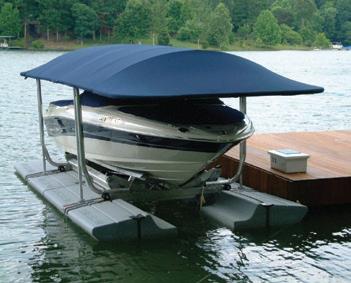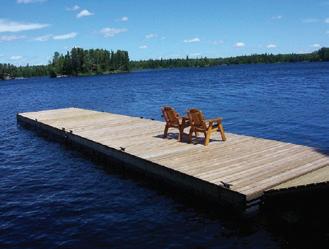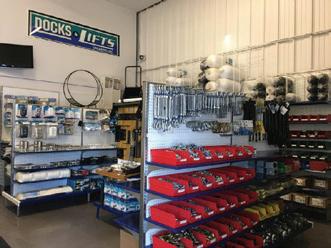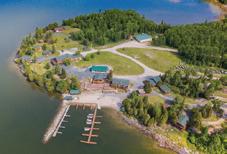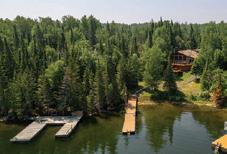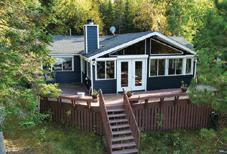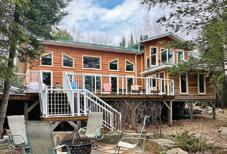







3 LOWDSA
President's Message 3
Executive Director’s Note 4
Our Contributors 5
Mark your calendars 7
The impact of a LOWDSA membership now and for the future 8
31 Environment
Bruno the black bear 31
IISD-ELA: LEAF: Learning at the ELA About Freshwater 32
Snag some great nature-watching 36
LOWWSF: 21st Annual International Rainy-Lake of the Woods Watershed Forum 38
13 In the District
What's happening on your lake? 13
Water levels: Continued dry weather forecast provides good and bad news 15
Fisheries Advisory Council: changing walleye regulations 16
New Canadian capital gains tax rate negatively impacts middle class families that own cottages 19
Regional canoe routes 20
23 Living in a sustainable story by Jacob Boutwell 26 LOWDSA attends annual National Environmental Gathering in Treaty #3 by Alena Collier
Integrated socio-economic and environmental modelling for Rainy–Lake of the Woods water management 40
Human impact on wildlife 44
47 Living
Treading wisely: Digging in on the reasons to choose green-powered lawn equipment 47
Member recipe: Sautéed Swiss chard 49
into spring... and summer by Jacob Rodenburg & Drew
Tales of gold by




The Board of Directors is excited to introduce Brie McCardle, our new Executive Director. Brie joined LOWDSA in 2019 as part of the LakeSmart team. From the beginning, she demonstrated a keen interest in preserving the environment. In 2021, Brie graduated from Niagara College as an Environment Technologist. Her focus was in field and lab work— preserving wetlands, water, and natural habitats. Her program of studies integrated biology, chemistry and civil engineering.
After two summers as a LakeSmart intern, Brie became our Environmental Program Coordinator intern and, shortly thereafter, our Program Manager. Brie has direct experience in managing LOWDSA’s financial system and has been successful in grant proposal writing. You may even have read her Area News articles. Brie grew up in Kenora, graduated from Thomas Aquinas High School and is bilingual in English and French.
The Board of Directors would like to take this opportunity to thank exiting Executive Director Ashley Hoffmeister for her many important contributions since taking on the ED role a year and a half ago. Ashley joined us during a time of transition and growth. She quickly got to work by helping us make significant changes to our somewhat dated technologies. The final products of these changes—a fresh new website and membership management system—will be rolled out in the coming months. Ashley has been creative in her work and has been essential to our current and future success. We will always consider you to be a great friend and wish you joy and happiness in all your endeavours.
Over the last few months, our contact at the Ministry of Transportation has stated, “there is not much to report but, things are moving in the right direction. The next milestone will be the preferred alignment section.” An additional inquiry provided the following: “…they (MOT) are currently undergoing evaluation of the alternatives and that there is no firm timeline.” The most recent update said, “…we are currently evaluating the routes for Section 2 of the four laning between the Manitoba border and Kenora. We hope to have another open house scheduled in the spring which will present the preferred route selection. We will be sure to notify you when we do schedule this
so that you can get the word out to your membership.” As you can see, there is not a lot of information that is provided to us, but it is spring, and hopefully we will receive something substantial soon.
On the other hand, our requests of the Ministry of Transportation have been to ask for a Zoom or Teams meeting for our members, a presentation to be made in Winnipeg, and, lastly, to schedule the consultation at a time that could easily accommodate stakeholders, i.e. on a Saturday. We have also suggested that the MOT follow the example of the Ontario Ministry of Natural Resources and Forestry where a “summary map” of the work plan is made available through the Province of Ontario portal.
Our Environment Committee is planning to meet with member representatives from the lakes in the region, from which we have a strong cross section of participation. The highway twinning project is an enormous one that needs to consider multiple perspectives. Our goal is to continue to be your “eyes and ears” and to facilitate an open dialogue with the Ministry of Transportation.
Not only should we be conscious of zebra mussels, phragmites, spiny water fleas, purple loosestrife and a host of other invasive species—let’s hope this new threat doesn’t come our way. The Government of Canada has made the unprecedented decision to shut down public access to all lakes in two of B.C.’s most wellknown national parks—all waterbodies in Kootenay and Yoho National Parks for the foreseeable future at least.
The drastic move is being made to protect fish species vulnerable to Whirling Disease which has the potential to decimate fish populations and has a mortality rate of up to 90 per cent. Whirling Disease is an infectious disease of finfish. It is caused by a microscopic animal that is present in freshwater worms that are then ingested by the fish. Once again, let’s protect our waters: Clean, Drain and Dry your vessels when moving them between waterbodies. Please welcome our LakeSmart team and plan to access our boat wash station, which will be present at various high traffic boat launches in the area.
As always, look forward to seeing you over the next few months in this great place we all love and are working together to protect.
Happy spring!


It seems like it was yesterday I was preparing my note for the last edition of Area News. Spring weather is settling in, which of course has the mind wandering to summer and all of the things that come with that for our team at LOWDSA.
We’ve taken the spring months to plan for the upcoming LakeSmart season, which promises to be a great one. We are happy to have a boat in the water again for the 2024 season. We have lots of our regular activities planned, as well as some time planned in the Sioux Narrows and Nestor Falls area. We are looking forward to meeting new people and creating new relationships. If you’d like the LakeSmart team to visit you, please reach out to us at executivedirector@lowdsa.com.
We hope you are able to join us for the AGM at 7 p.m. on May 15, via Microsoft Teams. You can register on our website at lowdsa.com under the News, Events & Info heading, and Annual General Meeting. You can also call our Assistant Executive Director, Alena, at 1-888-265-9784. We’d love to see you there so you can share your passion for lake life with us.
One of our favourite events to attend on an annual basis is the International Rainy-Lake of the Woods Watershed Forum. It was a great event with many incredible speakers, and an excellent opportunity to network with our peers. The collaboration between many groups across the watershed is extremely important and valuable work. It was very interesting learning about all of the current projects and their progress. You can read
a recap of the event written by Todd Sellers and Teika Newton from the Lake of the Woods Water Sustainability Foundation on page 38.
We were also fortunate to take part in the National Environmental Stewardship Gathering hosted by Grand Council Treaty #3 on Niisaachewan Anishinaabe Nation. The event was very well planned by their Territorial Planning Unit. We were able to learn a lot about what is happening across the region from many speakers and knowledge keepers. We left the event feeling inspired and filled with hope as the environmental stewardships efforts across Treaty #3 are significant. You can see a recap of the event on page 26.
With all of that being said, this will sadly be my last note as the Executive Director. I am moving on to new adventures. My time with LOWDSA has truly been a pleasure. I’ve had the opportunity to meet so many amazing people and the amount of learning I have done over the past couple of years has been very valuable. The importance of the work LOWDSA does in region has been one of the biggest highlights. I love everything about LOWDSA and what it stands for.
I am handing the reigns over to Brie McCardle who you have all come to know in various roles over the years. She has done a commendable job bringing the LakeSmart programming along and managing all of the tasks that go along with that. The ED duties are being left in great hands.
Although this is goodbye to LOWDSA in this capacity, I will continue to support the organization through membership, and look forward to seeing everyone in the community.

The Lake of the Woods area and LOWDSA’s activities take place in the territory of the Anishinaabe Nation in Treaty #3 and the traditional homelands of the Métis Nation of Ontario. The beautiful lakes, shorelines, and environment that we enjoy should be respected for their cultural significance and history.
DISTRIBUTION & MEMBERSHIP
Wake Marketing Inc., 140 Main St. S., Kenora, ON P9N 1S9
Publisher: Mike Greaves, mike@areanewsmagazine.ca
Editor: Leanne Fournier, editor@areanewsmagazine.ca
Art Director: Shayla Smith, shayla@wakemarketing.ca
Design & Layout: Mike Newton, Ashley Pereira
Advertising: Deb Polakoff, deb@areanewsmagazine.ca
Lake of the Woods Area News is published five times per year and is mailed to LOWDSA members. To receive Area News visit lowdsa.com and become a member today. TOLL-FREE 1-888-265-9784 PHONE (807) 468-8715
Publication mail agreement #43107013. Printed in Canada. © 2024 LOWDSA. All rights reserved. The contents of this publication may not be reproduced by any means, in whole or in part, without prior written consent. Statements of fact or opinion are the responsibility of the author and may not represent the view of LOWDSA or Wake Marketing Inc.
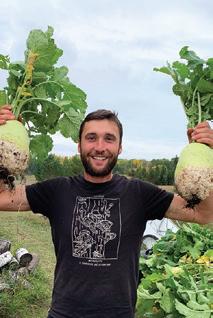
Born and raised in Kenora, Jacob Boutwell spent several years travelling and learning about agriculture, activism, and sustainability. In 2018, he moved back home to apply what he learned by co-founding the non-profit Harvest Kenora in 2019, and the vegetable farm Muriel Shores Farm in 2023. When not farming, Jake enjoys building earth ovens, jumping in the lake as soon as the ice is out, and participating in various community building projects. Jake lives in community with his partner, his family, and his “farmily”. He is a father to a persistently curious baby daughter and a lovably wild stepson.
John Waterer has been a visitor on Lake of the Woods for over 50 years and in 2000 he and his wife Kim Minish bought their cabin in Mud Portage Bay. John has a background in biology and agriculture and is passionate about the health of Lake of the Woods. John served as a member of the LOWDSA board, chairing the Environment Committee and currently sits as a board member on Clearwater Bay Stewardship Foundation. John has a keen interest in the history of Lake of the Woods and how settlement has dramatically changed its landscape. He says, “We’re a family of fishermen with a cabin hobby”. Most days John and Kim can be found somewhere on the lake chasing the fish that were “biting great yesterday”. You may recognize the family name as John and Kim’s son Ian and his fishing partner Motei Demers won the 2021 Kenora Bass International.

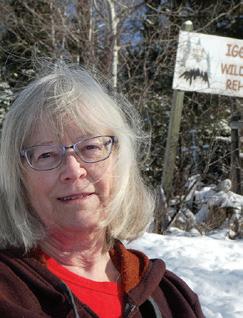
Lillian Anderson has retired from the MNRF and is enjoying life with her husband, Bruce Ranta, on their 230 acres of land. Based on her experiences as a wildlife custodian Lil has published two non-fiction books on wildlife rehabilitation, Beavers: Eh to Bea, and Pond Memories and has contributed nature-based articles in the past to the Area News When time allows, she updates her rehabilitation blog iggy2014.wordpress.com on critters in care. She holds a BSc, Major in Biology. Her hobbies include wildlife photography, writing, and more recently dabbling in acrylics, watercolour and coloured pencils.
PRESIDENT: Garth Collier, Schnarr Lake
PAST PRESIDENT: Christine Semenchuk, Bigstone Bay
SECRETARY:
Jackie Lowe, Gun Club Island
TREASURERS: Carley Fyke, Welcome Channel; Jeff Rempel, Pine Portage Bay
CHAIR, MEMBERSHIP: Wanda Kabel, Sammons Bay
CHAIR, GOVERNMENT AFFAIRS: Don Parfitt, Winnipeg River
CHAIR, ENVIRONMENT: Adam Blake, Corkscrew Island
DIRECTORS AT LARGE: Martha Mankewich, Nanton Island Bob Stewart, Longbow Lake Trevor Templeton, Minaki
EXECUTIVE DIRECTOR: Brie McCardle, (807) 468-8715 executivedirector@lowdsa.com
ASSISTANT ED: Alena Collier, (807) 468-8715 alena@lowdsa.com
Teika
P.O. Box 1160
Kenora, ON P9N 3X7
EMAIL: info@lowdsa.com
TOLL-FREE: 1-888-265-9784
PHONE: (807) 468-8715
M N LOWDSAssoc
P S LOWDSA V Lake of the Woods District Stewardship Association
Alena Collier Garth Collier Heather Gropp Sharon Gurney Ashley Hoffmeister Connie Larson Cassidy Mazur Drew Monkman Lori Nelson Newton Jeff Polakoff Jacob Rodenburg Dave Schwartz Todd SellersThe spring photo contest winner is Jan and Michael Blake.
The shot was taken on February 17, 2024. Jan and Michael embarked on a distinctive northwestern Ontario journey taking the ice road when they snapped this stunning picture. A truly unique winter experience.
"Even with almost four decades of experiencing Lake of the Woods, travelling the lake via maintained ice roads has given our family a whole new perspective. As the 200 km round trip from Kenora to Angle Inlet, Minnesota follows much of the same route travelled by boat in summer; the detours over land and around ice ridges helps provide yet another adventure. This was a memorable day!"
— Michael Blake

Below are some of LOWDSA’s upcoming events. Information is subject to change. We will notify members of any changes and information with as much notice as possible via eNews, on our website and social media platforms.
LakeSmart Returns
Welcome the LakeSmart team back and

LakeSmart at Matiowski Market
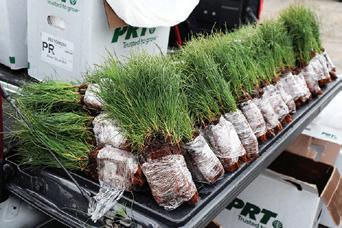
TBD—Stay tuned on eNews and social media
7 p.m. via teams: lowdsa.com/cpages/agm


From Kenora: Thursday, August 8 at 8 a.m.
From Sioux Narrows – Nestor Falls: Monday, August 19 at 8 a.m.
Visit lowdsa.com/cpages/iisd-ela to purchase your tickets.
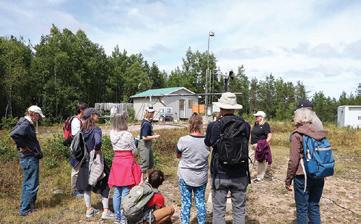
Boat launch
LakeSmart re-enters Lake of the Woods area sometime in late June!
Watch for another deployment of our settlement samplers. Contact executivedirector@lowdsa.com with any questions.
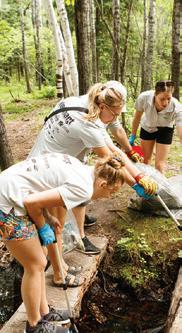

Stay tuned for the launch of our boat wash station!

Being a Lake of the Woods District Stewardship Association (LOWDSA) member goes far beyond just a subscription. Your unwavering support strengthens the association and plays a vital role in preserving the beauty of the Lake of the Woods region. It is incredible to think that LOWDSA has been around for over 60 years and so have many of our members. There are numerous benefits that come with a LOWDSA membership— such as this amazing publication, access to educational resources and environmental experts, community events, volunteer opportunities and environmental initiatives. Let's continue to educate, grow, and most importantly, inspire people to become members and be a part of our mission. Together we make a difference in protecting this precious environment.
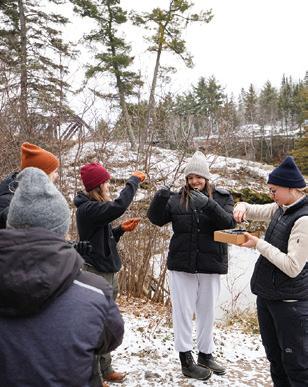
The Area News is like a time capsule, capturing the essence of the Lake of the Woods region for over 60 incredible years. It is more than just a magazine; it is a symbol of our shared passion for the environment and conservation. Each issue brings us closer to our lake communities, providing practical and valuable information that enhances our lake life experience. We use this platform to engage, communicate and educate on prominent issues relevant to the region and you, our members. It is a treasure trove of stories, tips, and resources that inspire us to protect and cherish this place we love. We offer gratitude to our members who have been here for the long hall, and we welcome our new members with open arms.
Email editor@areanewsmagazine.ca with any membership stories, topics of interest, questions, or concerns. The more we know about what floats your boats, the better we can serve our membership.
We strongly believe in the importance of intergenerational involvement for the future of LOWDSA. When working with our school groups in the spring and summer, we are always reminded of how important it is to connect with young minds. It is encouraging to witness how much interest, care and passion is present. As we are inspired, we also want to leave a lasting impression as young people are the future caretakers of our beautiful lakes and surrounding lands.
We encourage everyone to share the Area News with the youngsters in your lives—whether through the gift of a membership to young family members, participating in the LOWDKids activities shared by Jacob and Drew, or reminding them how impactful LOWDSA has been for you over the years. By involving youth early on, we can inspire a deep love and respect for nature that will continue to grow. Learning about the delicate balance of ecosystems, the impact of human activities, and the importance of conservation empowers the next generation. A fresh perspective and innovative ideas can bring about meaningful change.
Title photo: This winter we were fortunate to spend some time outside at several community events such as the Rabbit Lake Winterfest with Mosswood Adventures.
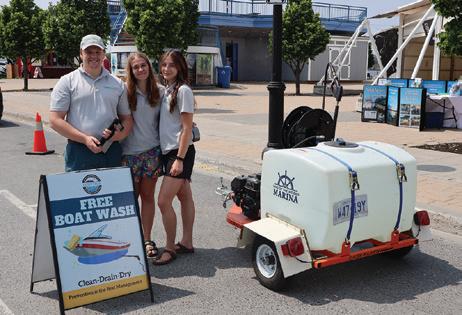
We all come from diverse backgrounds, age groups, lakes, areas, but have one thing in common: a shared passion for lake life. You do not have to own property to be a part of the LOWDSA community. The more people we reach, the greater the influence of sustainability. Which is why giving the gift of a membership is a wonderful way to give back to the environment.
By encouraging membership, you are empowering individuals to make a positive impact and fostering a sense of responsibility









One of the greatest parts of lake life are the stories shared around the fire…remember that sunset? The night Aurora Borealis lit up the sky? All those great hikes deep into the forest? Maybe an especially delectable meal that brought everybody together around the picnic table. Oh and that fish that got away! Or maybe just the everyday experiences that are the foundation of your family’s lasting and irreplaceable memories at the lake.
These are all great stories that connect us…and we want to read them! The Area News is always looking for member stories. All we need is your rough draft of 800 to 1,000 words, some great high-resolution photos, and we’ll help make it the best story it can be for our readers and your families and friends.
It’s always a keeper. If you have such a story to share, please email editor@areanewsmagazine.ca. We would love hear from you!
Association and club news wanted too
We are also always looking for club and association news and updates about what’s happening on the lakes, rivers and communities throughout the region. Email communications@lowdsa.com.


Your continued support of LOWDSA's programs and initiatives does make a difference.
Member Name: LOGIN EMAIL:
Alternate Email: Address:
Home Phone:
Cottage Phone:
Mobile Phone:
m YES, send my renewal notice by email
Use your smartphone camera app to scan this QR code and renew your LOWDSA membership online.

You can also contribute to our EISP Fund, purchase pine seedlings, and order gift memberships while you’re there!
Renew by phone: 807-468-8715 or 1-888-265-9784
Renew Your Membership
Renew by email: membership@lowdsa.com Membership Renewal Renew online, or use this form to renew by mail or email.
You can choose between a Full Membership (magazine mailed) or a Virtual Membership (digital magazine).
»
|
Kenora: May 18, 2024 10am - 1pm
Sioux Narrows: May 24, 2024 10am - 1pm
Help reduce our carbon footprint while expanding your own patch of forest. Please order your seedlings by May 5, 2024.
m Clearwater Bay (Firehall) m Storm Bay Rd. (Firehall) # of bundles (of 15) __________ at $15 each
A donation of $5 from each member would support an entire LakeSmart position and contribute to LOWDSA’s mobile boat wash station! Contributions to the EISP Fund can be made online any time at lowdsa.com/campaigns/eisp.
m $250 m $100 m $50 m $25
m Other $_____________________________
TOTAL $
To purchase multiple gift memberships, please attach each individual’s contact information to this contact form.
m Full Membership, $60 m Virtual Membership, $52
Recipient’s Name: _______________________________
Recipient’s Email: _______________________________
Recipient’s Address: ______________________________
m Please send give card with message:
TOTAL $ GRAND TOTAL $
Payment Options
» Cheque payable to LOWDSA or call 1-888-265-9784
» Pay by credit card:
(mm/yy) CVC# _______
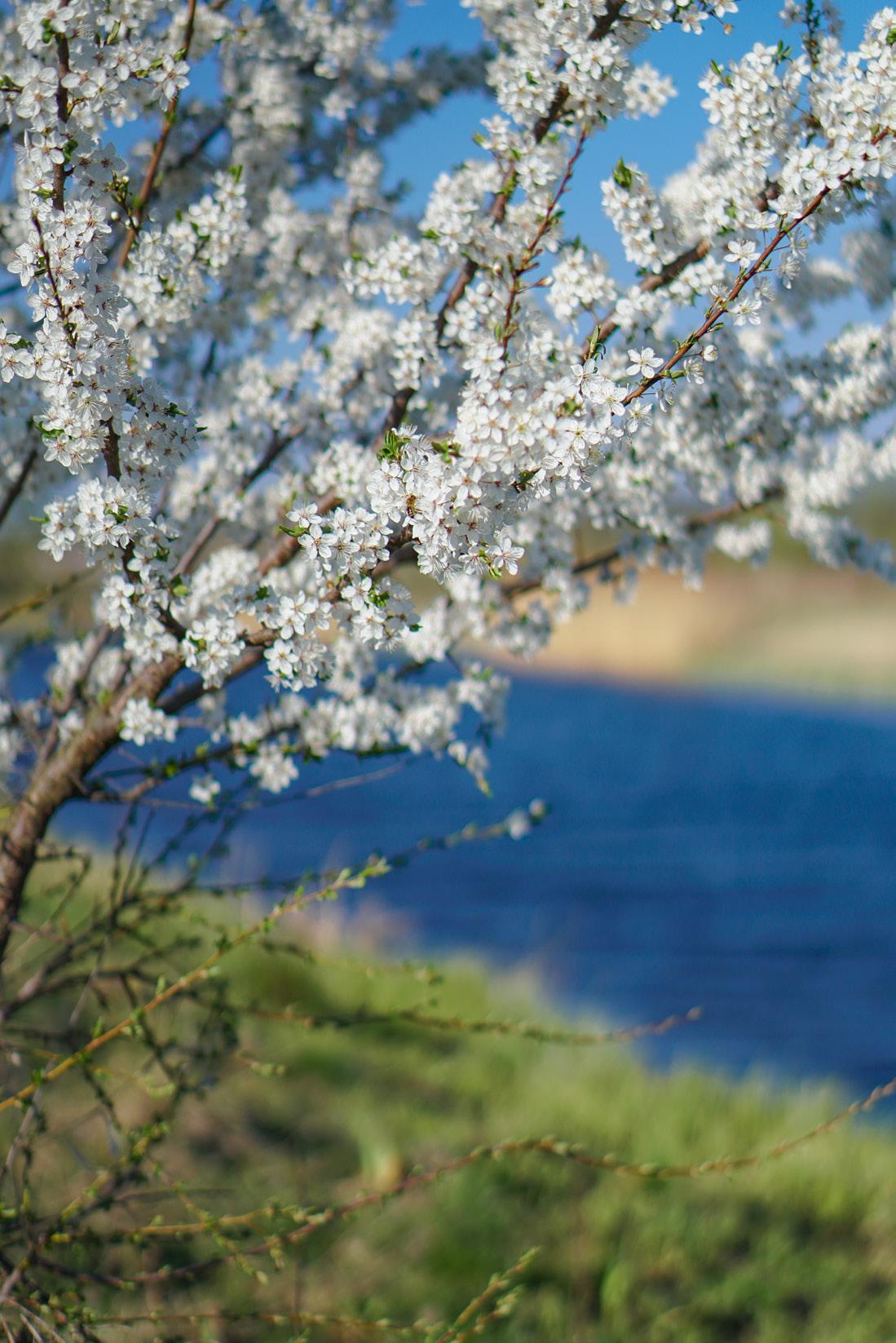





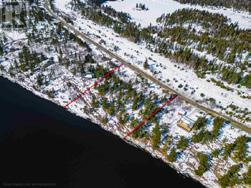


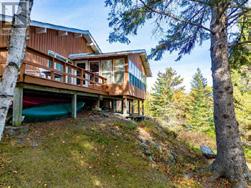








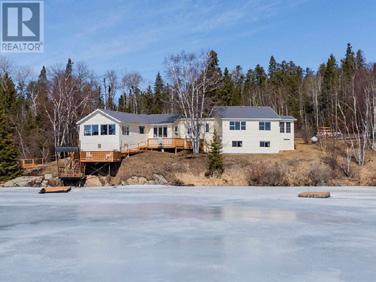







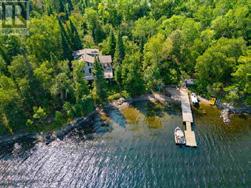






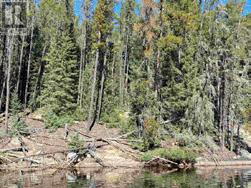




Head on over to visitkenora.ca/events-and-festivals and visitsunsetcountry.com/events for a host of events happening throughout the region over the next few months!
MAY 23 - 26
2024 Nibi (water) Gathering
Manito Api (Bannock Point), Whiteshell Provincial Park lwic.org/news/2024-nibi-gathering
JUNE 12 - OCTOBER 2
Matiowski Farmers' Market Market Hours: Wednesdays: 8:30 a.m. to 2:00 p.m.
JUNE 18
Sioux Narrow – Nestor Falls Farmers' Market snnf.ca
Ogimaawabiitong honours National Indigenous Peoples History Month
Join Ogimaawabiitong (Kenora Chiefs Advisory) for its third annual gathering in honour of National Indigenous Peoples Day, which is being held from 10 a.m. to 3 p.m. on June 4, during National Indigenous Peoples History Month.
A day of cultural enrichment and celebration is planned at the KCA Youth and Family Wellness Camp, at 371 Strecker Road in Kenora. The day will be a celebration of Indigenous
culture through a variety of traditional activities, stations, and entertainment, with the theme “Sharing our Stories” embedded into all the activities. This will allow for a day of cultural enrichment and the chance to sit down with our people and learn first-hand.
Open to all local and community schools, community partners, and the public, the day will start with Opening Ceremonies with the KCA Grandmother Drum—Shawanoong Banaise'seek—and local elders, followed by storytelling, Indigenous field games, a powwow, lunch, a door prize giveaway, and much more. Parking and pick-up points will be available.
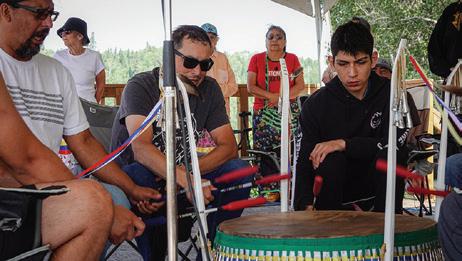
Things to do:
• Hiking and Walking Trails – Rushing River Trails
• Kenora Nordic Trails
• Vernon Nature Trails
• Waa ‘say’ Gaa Boo (Tunnel Island Trail) visitkenora.ca/summer-adventure


YOUR HOME AT YOUR FINGERTIPS
CONTROL YOUR SECURITY, AUDIO, VIDEO, LIGHTING, BLINDS AND TEMPERATURE FROM ONE APP PROMPT LOCAL SERVICE AND SUPPORT WOLFE.CA
Sail with LOWISA this summer
Lake of the Woods International Sailing Association (LOWISA) invites you to explore Lake of the Woods with us this summer. Our 2024 Race Week will showcase the magic of a ‘classic’ LOWISA experience; but LOWISA is not your typical sailing regatta. We host a week-long sailing adventure where sailors enjoy a side of sailing beyond sport. LOWISA is where highcalibre racing meets passion & camaraderie. Join us!
This summer we will be celebrating our 58th Annual LOWISA Race Week as we set out to explore the Northwest part of Lake of
the Woods. Our LOWISA 58 courses will include races through the Manitou and Clearwater Bay, as well as mid-week festivities at Ash Rapids Lodge near Ptarmigan Bay. Our route for the week is planned as pictured.
Since it was established in 1966, LOWISA has effectively served as a place where lake-lovers learn to sail and where sailors grow an appreciation for the lake. Our LOWISA traditions successfully instill a love for wind, appreciation for water, and passion for adventure on the lake.


With the support of LOWDSA and other Sustainability Partners, LOWISA is committed to making meaningful contributions towards conservation and protection of the lands and waters that make our regatta possible. Since 2018, we’ve worked to promote sustainable practices among our fleet and has committed each year to improving upon past efforts.
In partnership with Volvo Cars Winnipeg, we hold an annual contest to promote sustainability. The winner receives a custom sail by North Sails, courtesy of Volvo Cars Winnipeg, which has successfully captured the attention of our participants.
In 2024, our sustainability goals include minimizing long motors in route-planning and implementing a new system to track our fuel usage throughout the week-long event. Using this year as a starting point, we hope to monitor progress and reduce LOWISA’s footprint at future events.

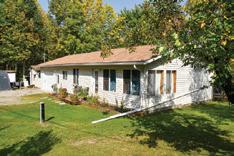
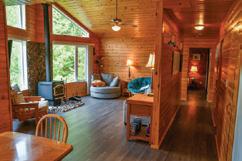
The LOWISA experience comes in all different shapes, sizes, and colours. We’ve got fast boats, slow boats, big boats, small boats, tippy boats, comfy boats, boats full of babies, boats with dogs, house boaters, on-shore tenters, full-weekers, half-weekers, commuters, and the list goes on. You can enjoy a standard keelboat race week where you and a crew pack on all the essentials and set sail for the week, rafting up to other boats each night and sleeping aboard between races—or you can find a custom-fit with supports that make a LOWISA adventure work for you.
We invite you to come as you are; our organizing team is here to bring your the LOWISA dreams to life! Visit lowisa.org and join the mailing list to learn more. Reach out to saillowisa@gmail.com to make it happen. an
Persistent dry conditions continue to be a primary consideration for water level planning in the Winnipeg River Basin including Lake of the Woods. During the Control Board meeting in March, the Board’s spring regulation strategy was adopted following a review of existing and anticipated factors affecting water levels heading into the spring and summer seasons. This strategy guides operations and lake level targets from March, through lake refill and until the end of June. It is developed taking into consideration the end of winter basin conditions, hydrological and meteorological forecasts, and input from the Lake of the Woods / Winnipeg River Basin interest groups and resource agencies.
During the winter, the basin experienced very low levels of snow, and record-breaking high air temperatures. The above normal temperatures and lack of precipitation didn’t come as a complete surprise as these weather patterns had been forecast in late fall and heading into winter when the fall regulation strategy was set. According to Environment and Climate Change Canada, the period between December and February was one of the warmest and driest on record. While forecasting of weather can be very imprecise, in this case it has proven to be quite accurate. The unusual conditions also resulted in the ice on lakes forming much more slowly than normal with reduced quality and stability.
A late March snowfall in the northern part of the basin helped to increase moisture levels; however the overall snowpack remained very low with little precipitation in the southern part of the Basin including Rainy and Namakan Lakes, which provide the majority of inflow to Lake of the Woods. The forecast for spring was for continued dry conditions. As melting snowpack in combination with precipitation is critical for lake refill, the forecasted dry conditions were expected to result in a lower-than-normal level of runoff for the refilling of lakes.
Given the unpredictability of weather forecasting due in part to the changing climate, there continues to be some potential for above normal spring rainfall, however we will have to see what spring brings. Outflows will be adjusted to maintain lake levels within normal ranges and based on changing circumstances as well as downstream impacts.
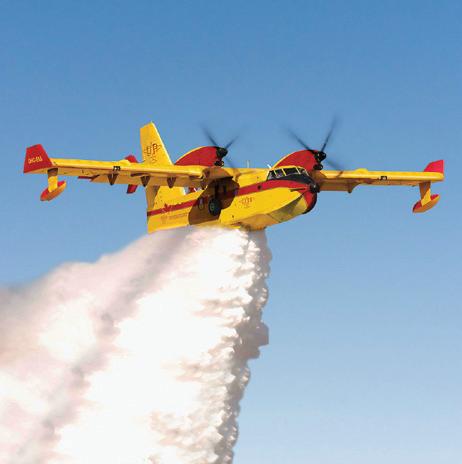
At the time of writing this article in late March, the level of Lake of the Woods was 322.43 m (1057.8 ft), which is in the low normal range for the time of year. The end of June lake level target is set at 322.78 m (1059.0 ft). This level is consistent with the lake level numbers / datum shown on your navigation charts.
As we get into boating season, it will be important to maintain a close watch on water levels and take into consideration the varying levels of the lake due to such factors as wind tides. The good news is that the chance of flooding in the basin this year is very remote. The potential bad news is that the anticipated dry spring and summer may result in an increased threat of wildfires with the need for vigilance due to the heightened risk.
Please be aware of local conditions when on or near the lakes and rivers in the Basin. For up-to-date information on water levels and the work of the Control Board please visit lwcb.ca. an



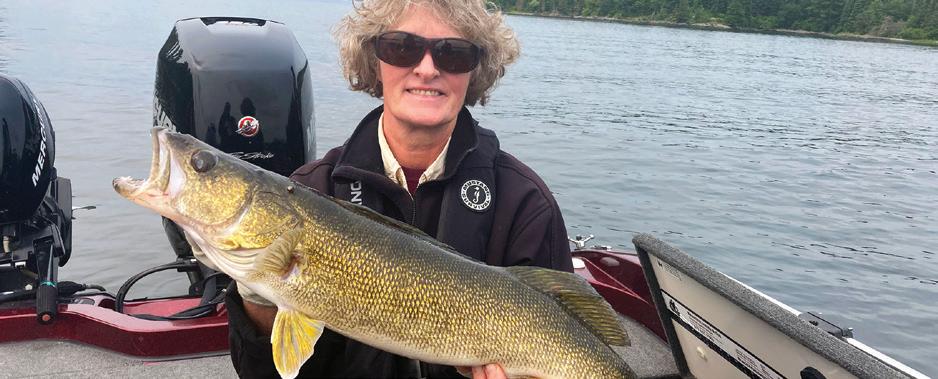
In 2020, a review by Ministry of Natural Resources and Forestry (MNRF) of test netting and creel census* data on Lake of the Woods (LOTW) revealed a concerning drop in average walleye size and overall population. This concern prompted MNRF to initiate a review of walleye fishing regulations on the lake.
BY JOHN WATERER, PHD.As part of MNRF’s review, a Fisheries Advisory Council (FAC) was created. This group is comprised of local stakeholders, including anglers, cottage owners, lodge owners, tournament organizers, commercial fishers and processors, as well as Treaty #3 representatives. By including many of the interested parties in the early stages of the process, MNRF got a clearer perspective on how potential changes may affect the LOTW fishing community. This also gives MNRF the opportunity to engage in lengthy discussions with stakeholders in order to gain consensus when new regulations are presented. Making changes to fishing regulation is both an art and a science, balancing interests from all sides while limiting access to a valued and limited resource.
The history of fishing on LOTW is not a great story. We’ve exploited the regions abundant natural resources for decades. LOTW was once considered to be one of the top sturgeon fisheries in the world, with commercial catches exceeding 800 tonnes in 1893. According to records from the Lake of the Woods Museum, just seven years later, commercial fishing (largely for caviar) had resulted in a 90 per cent decline in sturgeon population and the species was almost extinct by the 1930s. The first season closure was implemented for sturgeon in 1903 to protect sturgeon during spawning… which was the same year smallmouth bass were introduced to LOTW.

MNRF really wants to get this right.
The combination of heavy angling pressure, climate change, and introduced species has made fisheries management a massive challenge. MNRF evaluates the status of fisheries in Ontario using biological reference points. Managers compare what is observed from monitoring data to what is expected given habitat and climate
characteristics of a waterbody. The two main reference points used are mortality rate and biomass (how much fish weight is present in the lake). The standardized approach however doesn’t allow for population shifts that may have resulted over time. Example: Invasive rusty crayfish have dramatically altered the lake biology on the western end of LOTW. This shift may have changed fish location and movement, making historic data less useful in making future recommendations.
Angling has also changed. The first time I fished for walleye on LOTW, we trolled a Red Devil behind a canoe… and caught walleye. Today an angler could paddle a very long way before they caught a walleye trolling a Red Devil on LOTW. Since my first walleye experience, two huge advances in fishing technology have dramatically impacted fishing. Incredibly detailed digital maps are now available for most lakes in the region, and when combined with GPS systems, an angler can literally become an instant local expert driving from one walleye reef to the next with virtually no experience in the area. New directional sonar has also improved angler success, with the ability to locate fish well outside the range of traditional sonar. While increasing pressure on the walleye population, new technologies will continue to evolve and strict adherence to limits should be able to mitigate changes.
MNRF monitoring data on Lake of the Woods indicates that “the walleye population is vulnerable to continued high levels of harvest to the point where the current harvest poses a risk to the quality of the walleye fishery.” In simple terms, the population could be close to crashing.
MNRF’s three areas of concern for LOTW walleye
1. High harvest rates make the walleye population more vulnerable to changes in the LOTW environment (climate change and invasive species).
2. The population testing (test nets and creel census) indicate that the walleye population is significantly below sustainable levels.
3. The average size of walleye in LOTW is small, indicating high harvest pressure. Older and mature walleye have higher rates of reproduction, thereby helping sustain the population.
MNRF was the first to admit that more data would be useful in order to make the most appropriate changes to the fishing regulations. The combination of COVID and limited resources available to MNRF created a situation where “erring on the side of caution” seemed to be the prudent choice.
The data summary was presented to the FAC along with several potential alternatives. The initial set of changes that the FAC developed included the same size changes as on the current proposal, but also included a 50 per cent reduction in catch limit for both sport and conservation licenses… an abundance of caution.
Public consultations were held and in general the response was favourable, however there was sufficient push back on the proposed reduction in possession limits that those changes were dropped… the art versus the science of fisheries management.
One controversial point remained around the ability to keep one “trophy” walleye over 70 cm. If the population of large fish is such a key indicator of the overall health of the population, wouldn’t it make sense to release all walleye over 43 cm? Unfortunately, older fishing regulations (currently under review) clearly state that any fish that you are not allowed to possess, must be immediately released… not even a picture. Unfortunately, if this change was implemented, it would harm several very popular walleye tournaments that use photos of released fish as a proxy for weight. So, for the time being, there will still be the ability to keep one large fish… but a quick picture and immediate release is the objective.



Lake of the Woods, Winnipeg River, Lac Seul, English River
• Web Site (updated each workday): www.lwcb.ca
• Notice Board (updated weekly): Level forecast and important updates on basin conditions; subscription option for email updates
• Public Open House: annually in June
• Contact Staff: Call: 1-800-661-5922 Email: secretariat@lwcb.ca
So, the bottom line is we can still keep the same number of walleye on LOTW, but there is a shorter size restriction 43 cm vs the 46 cm. Anglers are still allowed to keep one large fish (>70 cm), but this regulation is purely in place to enable photos to be taken for catch and release fishing tournaments. Anglers are strongly encouraged to release all walleye over 43 cm. This regulation could change if provincial wide regulations are changed to allow for pictures to be taken of “trophy” fish prior to release.
So after many meetings, conference calls and very lengthy discussions, the new regulations are out. Seeing how MNRF balances the art and the science of fishing regulation has been a real education. an
*A creel survey (also known as an angler survey) is a type of in-person survey performed by resource managers where an interviewer asks an angler question about their fishing experience including questions such as the duration of the trip, how many fish they caught, and if they were satisfied with their experience.
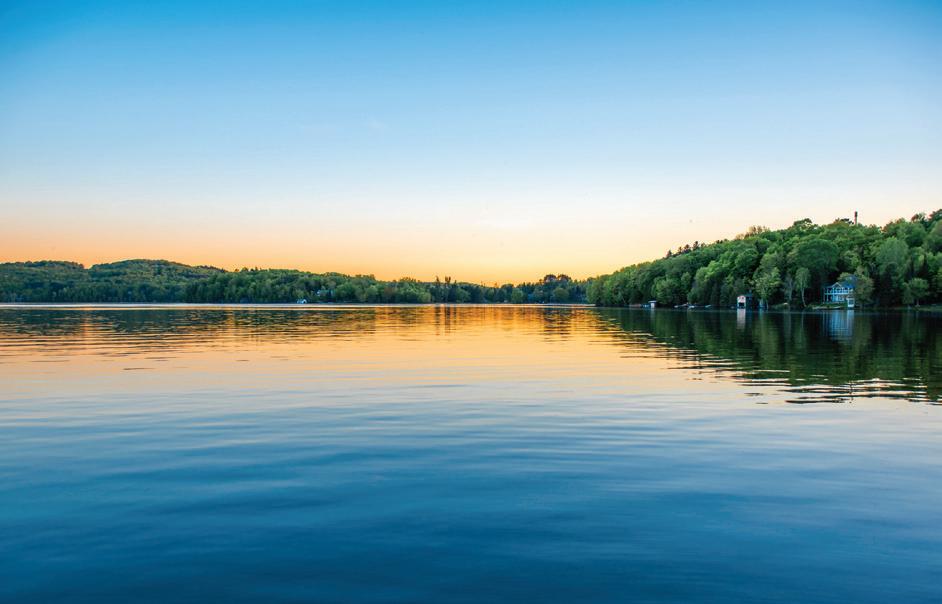

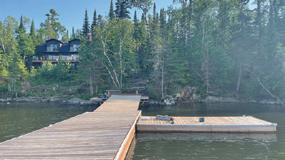
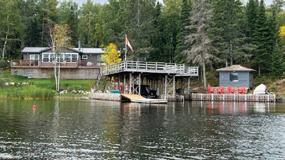

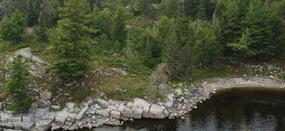
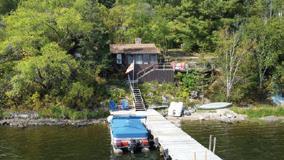
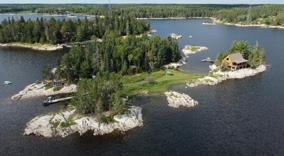
Historically capital gains have had a preferential tax treatment, as only a portion of the gain is included in your tax return.
The federal budget announced an increase on the inclusion rate from 50 per cent to 66 2/3 per cent for corporations and trusts and for individuals if the gain exceeds $250,000 per owner, effective June 25, 2024. Does this mean you must list and sell before June 24 ,2024? The answer is, it depends.
The devil is in the details and all we know is what was in the budget speech, no draft legislation. We won’t know the actual rules before June 25, 2024.
So what to do? Don’t panic!
Determine the capital gain on your cottage and house. Fair market value (get an appraisal) minus cost base (purchase price and capital additions equals your capital gain).
These numbers will help your lawyer and accountant analyze whether you can, and should, use your Principal Residence Exemption (PRE) on the cottage. In Canada you can select one property to be your PRE on a per year formula.
If you are using your PRE, then you will NOT be affected by these changes. If you sold a house after taking title to your cottage, you may only qualify for part PRE; then the math must be done to determine the actual effect of the budget.
• A transfer to family members may have little effect if the $250,000 of exclusion from the higher rate is an annual exclusion.
• If you are a couple and you have $500,000 of capital gain immediately excluded from the higher rate, you might pay nothing extra.
• If your gain is over $500,000 you could gift to family (a deemed sale at fair market value) a percentage interest per year and avoid the increased tax rate completely.
• If you sell and do not receive payment immediately, you can claim a reserve over up to five years.
If you are planning on a sale outside your family, and cannot arrange a sale before June 25, 2024, do not immediately reduce the purchase price. You could sell near the year-end and straddle the sale over two tax years possibly achieving a second $500,000 at the low rate per couple. Note there could be some other tax effects, both positive and negative.
June 25: 66.66%
June 24: 50%
$84,000
$63,000
$21,000 per owner
No one likes to pay more, but it could have been worse! Most tax specialists expected an increase to 75 per cent inclusion, like it was throughout the 1990s.
If your cottage is in a corporation or a trust, you would pay the higher inclusion rate for the entire capital gain, but corporations get certain credits when the sale proceeds are paid out to the shareholders, so calculations are needed. For Trusts, there are many planning options including allocating to a beneficiary who might get the first $250,000 at the 50 per cent rate.
Talk to your tax lawyer and accountant to get the help you need to plan to achieve the right plan for you. Not planning will create a larger tax burden for your estate, so planning is essential.
Join us for a Q&A at the LOWDSA AGM on May 15, 2024 at 7 p.m. and a more detailed analysis in the summer issue of Area News. an
Mona Brown is a member of LOWSDA's Government Affairs Committee and practices tax law at PKF Lawyers: mbrown@pkflawyers.com.


If you have no family to plan with and you cannot wait until year-end, let's look at an example using Manitoba rates (Ontario rater are slightly higher) of actual tax effect assuming a couple owns the cottage and has a gain of $1,000,000.
When I first moved to Kenora, there was nothing I looked forward to more than paddling on Lake of the Woods. I joined groups that would get together weekly to go exploring the shoreline of Lake of the Woods.
This experience resulted in some amazing friendships along with a much deeper appreciation of the beauty that surrounds us from a completely unique perspective. Paddling requires you to go at a much slower pace. You are closer to the nature that surrounds you, so much so that you can actually reach out and touch it. You experience the shoreline and water very differently than by boat or land.
While paddling you can get lost in time and space and be completely at awe with the nature that surrounds you. It can be the most peaceful and relaxing time you spend, unless of course you realize that you have gotten yourself into a place that you did not intend and you become aware that you are not even certain as to where that place is. This is really where this story starts.
In the summer of 2023, there was more than one report locally of a camp group on a canoe trip or groups of paddlers out exploring that ended up on the ends of people's docks completely lost. The paddlers, in many cases, thought they had been following a specific route and were surprised to learn from the camp owners that paddlers in that specific area were non-existent. They were not in fact on a current, known paddling route.
While this odd situation may seem a little humorous, in reality it is potentially quite dangerous. Following old maps or routes that are not up to date puts paddlers at risk of running into unexpected challenges and situations that will limit the fun and relaxation portion of a trip, or worse, puts them in a very dangerous situation that compromises their personal safety.
Our restaurant provides a unique experience for all. With high-quality ingredients our chefs create extraordinary food served in a beautiful and unique atmosphere.
Pick-up from the Kenricia Road landing is available Wednesday through Sunday at 5:00 p.m. Cost is $120 return, must be prearranged; maximum 10 guests. Parking at the landing is free.

The single most important way to ensure that your paddling adventures are full of fun and long-lasting memories is to ensure that you properly plan the trip at the outset. This of course means knowing that you are following a well-known path or route.
When paddlers started arriving at unexpected destinations in the region, questions were raised at the local visitor and travel information centres about the availability of current paddle routes. Fortunately, the Township of Sioux Narrows-Nestor Falls and City of Kenora partnered with Destination Northern Ontario in 2019 to develop six ground-truthed paddling routes. These are complete with GPS coordinates and camping recommendations in the most popular paddling areas of the region including, Lake of the Woods, Keewatin to Minaki and Kagaki (Crow) Lake.
These routes have been contributing to paddling memory-making for years, and have recently been travelled by a professional to ensure they are accurate and up to date. The situation in 2023 questioned the local awareness of this resource.
For anyone who is hoping to paddle this summer or looking to try out a new route, these maps are available at all of the regional visitor information centres, as well as on both Tourism Kenora (kenora.ca) and Township of Sioux Narrows-Nestor Falls (snnf.ca) websites. Work is also underway to travel and document an additional four routes to add to the existing resources.
This summer, why not try out one of these routes, knowing that you will be pointed in the right direction? Happy paddling! an

LICENSED 1500 SQ FT DECK * BOOKINGS FOR PRIVATE EVENTS & WEDDINGS


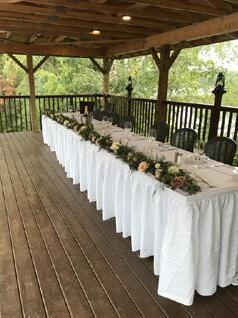

Whether


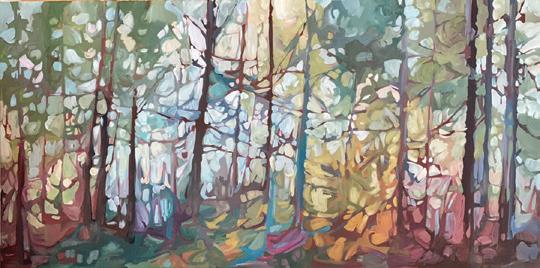




What does it mean to be sustainable? A term that is so ubiquitous in our lives carries a lot of meaning, and at the same time it is used so much that it can lose meaning. We are aware that there are elements of our society that simply cannot carry on indefinitely, and require some action to be able to sustain our society, ourselves, and our descendants.
On an individual level, we often think about this concept in terms of climate change, and lowering our carbon footprint. While this is a worthwhile goal, in this article series, I want to suggest and explore some other tools we can use to steer ourselves to a sustainable future, and indeed, a better future for all. The tool I will discuss in this article is story, and how to use story to take us from where we are, to a place that we want to be.
This may sound a little esoteric—but story and narrative are perhaps the most powerful tools humans use, and these tools can help us to navigate the coming decades to a sustainable future. It is through story that we humans can create a common narrative that allows us to work together to create social groups, nations, institutions, and entire cultures.

My business partner Melissa is out selling our wares. Farming collaboratively brings a lot of joy into our work.
Let me suggest an exercise. First, we need to imagine a sustainable future. Imagine a future that you want to live in and the future you want your greatgreat-great-great-great grandchildren to live in. Use your imagination, but I suggest you think of solutions that exist today, and extrapolate their use into your life for the future. What does it look like? What does this feel like? How do we live? How do we relate to one another and the world around us? How do we eat, travel, work, and play? This could be a fun exercise to do with loved ones, including kids and grandkids. I’m sure they would have lots of ideas. You could “create” this world in your minds, write it down, or draw pictures.
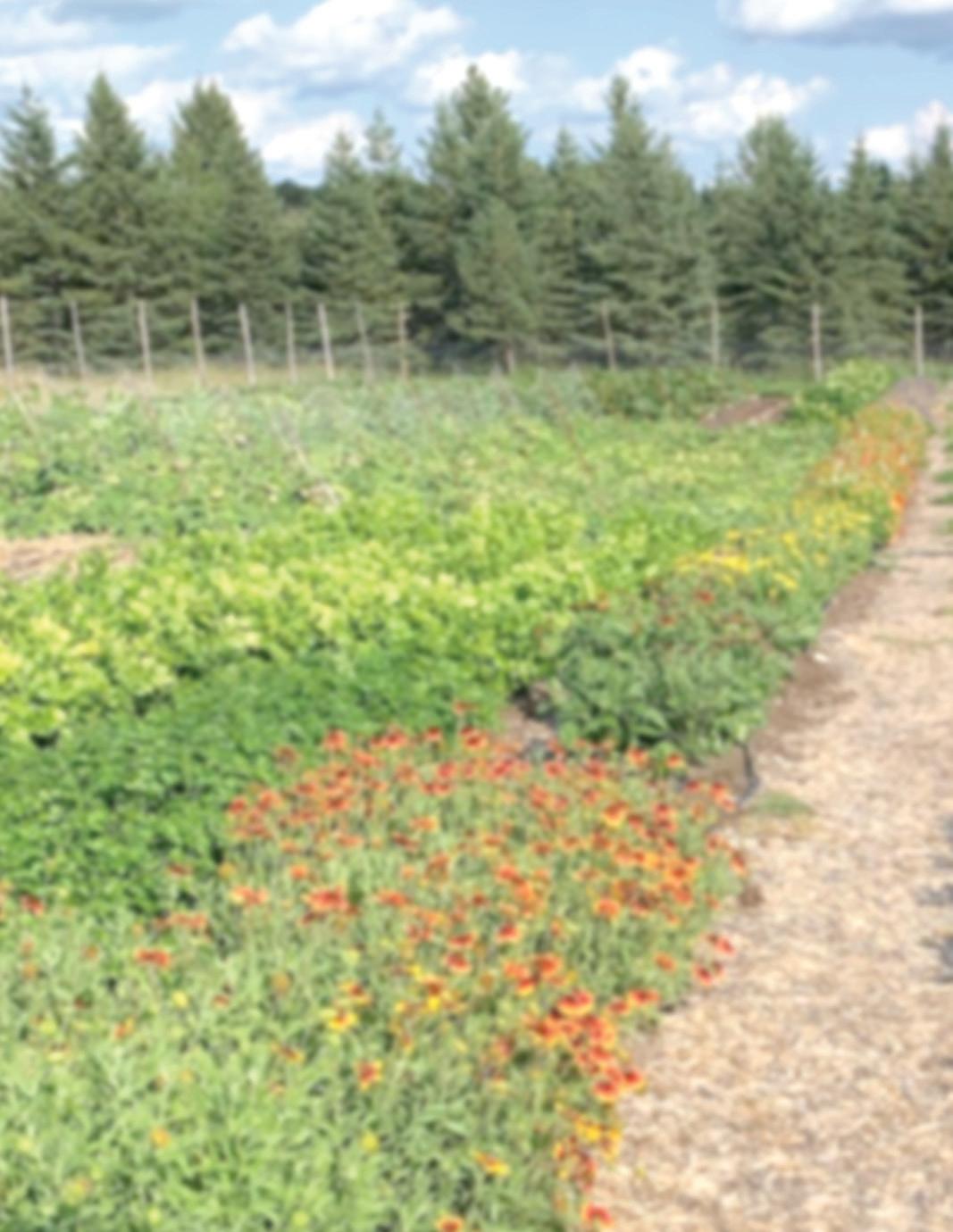
What is the story that we are telling ourselves today? It depends on who you listen to, but when I read the news, I see stories of a world perpetually at war, divided by politics, and increasingly hammered by the climate crisis. There are dozens of movies depicting a post-apocalyptic future, but there are few that depict a bright sustainable future for humanity. It’s no wonder that many of us feel anxious about the future.
What we need is a vision of what we want our future to be like, and to create a narrative that helps guide our actions into that future. How do we live our lives as a part of a sustainable story, and live a more sustainable life?

Now is the tricky part. The paradox (of sorts) is that on our own we cannot cause a sustainable future to come to pass, but the only way it can happen is through the independent actions of countless individuals. So the question we must ask ourselves is, “If my dream of a sustainable future were to be possible, how should I, with my own unique sets of gifts, passions, influence, and capacity lead my life?” This is no easy question, and its answer will change over time. I also think it’s important to try to answer this question without being attached to the future unfolding in any specific way. The beauty of this approach is, regardless of what the future brings, we get to find satisfaction and purpose in creating the kind of future we want in the present.
I will share some examples from my life. I love growing vegetables, taking gentle care of the tender seedlings and providing them an optimal environment to grow, cultivating them with the whole ecosystem in mind, providing food and habitat for bugs and birds along the way. I envision a future where the way we feed ourselves nourishes our bodies, our communities, and the natural world. I wanted my work to be something that aligned my gifts, passions, and vision for the future, so I decided to start a vegetable farm. In my work, I get to imagine what kind of food systems make it possible for humans and the natural world to thrive. I love being a part of that story, and it brings purpose, satisfaction, and sustainability to my life right now while contributing to a sustainable potential for the future.
Being a part of a sustainable story doesn’t need to be as large an action as starting a business. We make little and big choices every day that have an impact.
Rather than try to sort out the “right” choices from the “wrong” choices to lead sustainable lives, I encourage readers to try thinking about how these choices play into the story of their lives. Remember that there is no action too small to have an impact. It’s a cliché, but children truly are the future, and simply fostering a sense of love for the natural world in our kids and grandkids is perhaps one of the highest impact actions we can do to create a sustainable future.
What might being a part of a sustainable story look like at the lake? Anything that brings us into closer connection and relationship with the nature around us is a great place to start. When building, we can choose to use local materials, we have an abundance of wood around, and there are some local and regional mills that can supply quality local lumber. Gardening has been mentioned by many contributors, and for good reason. Gardening not only benefits the broader environment, but our
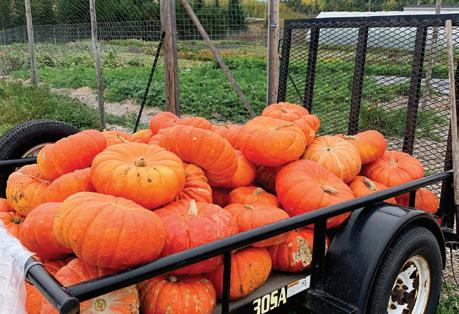

mental and physical health as well. Choosing play activities like swimming, hiking, and paddle sports bring us in closer contact to nature as well as having less of an impact than gas powered play.
Despite the challenges we face as a species and as individuals, the future holds infinite possibility. The world changes every day, and each and every one of us has an influence on that change, however small that may be. Right now, the problems we face feel intractable, and it’s easy to feel stuck in that story, but the more people that believe a story that things can get better, the more likely that they will.
The stories of our lives weave the tapestry of our culture. We not only need to create a story for ourselves to help guide us in our personal lives, we need to create common stories that we can use to work together to create a sustainable culture.
It is my hope that this article is a small contribution to that collective story. an



 Nothing says fall like a pile of pumpkins.
Nothing says fall like a pile of pumpkins.
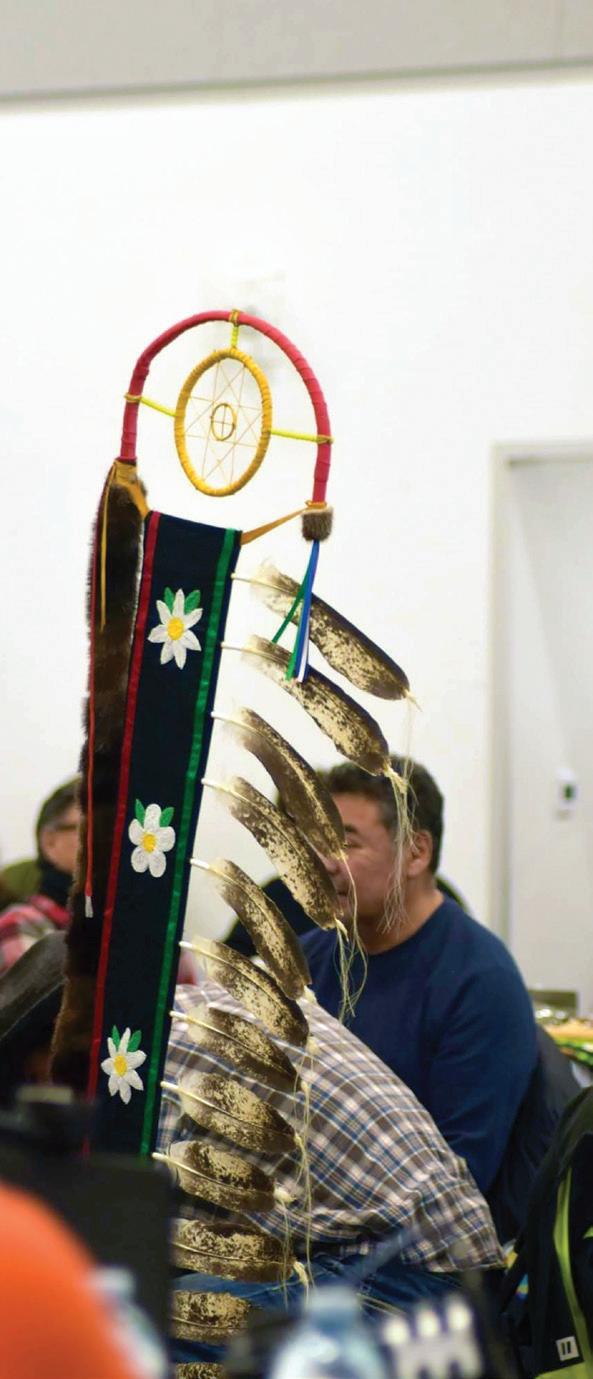
This February, the LOWDSA team of Garth Collier, Brie McCardle and myself, were fortunate to attend the two-day National Environmental Gathering in Niisaachewan Anishinaabe Nation, hosted by Grand Council Treaty #3. People travelled from near and far in the hopes to bridge environmental knowledge across Treaty #3.
We discussed and learned about current environmental efforts taking place in the nation, and the future steps to preserve and protect inherent jurisdiction and treaty rights. You could feel the passion in the room during discussions of each topic and the power of different perspectives.
“Treat the earth well. It was not given to you by your parents, it was loaned to you by your children. We do not inherit the earth from our ancestors, we borrow it from our children.”
This quote from Wendell Berry, reflects the mission of the gathering and gives inspiration to how we want to emphasize stewardship in everything we do. It is a call to action, to preserve the land for all generations to come and continue to promote healthy habitats. We must work with our children in mind and treat the earth and water as if they are a part of ourselves.
Both Days began with a ceremonial smudging, drum circle and opening prayer. Chief Cobiness held opening remarks on day one and Ron Mandamin closed the gathering with very insightful cultural teachings. Photo: GCT#3.
While learning from one of the many presenters, Brenda Morrisseau presented "An overview; Sagkeeng Anicinabe Nation’s environmental monitoring program and the journey to develop it." During Morrisseau’s heartfelt presentation she taught us how everything begins with Spirit and how to prepare for community environmental monitoring programs. Everything is very intentional, and respect must be shown before starting any project.
Stewardship is a responsibility, and you cannot have a passive role as a steward of the land and water. The theme of weaving traditional knowledge with western science was not only symbolic but also practical. Morrisseau highlighted the importance of interweaving these two systems to address complex environmental challenges. By acknowledging and respecting the deep-rooted wisdom of Indigenous
cultures while embracing the advancements of western science, the presentation underlined the need for holistic approaches to environmental stewardship. Morriseau emphasized the importance of small impactful practices that we as individuals can do through environmental programming and also in our daily lives. Be mindful of your consumption, specifically water.
“The earth does not belong to man, man belongs to the earth. All things are connected like the blood that unites us all. Man did not weave the web of life, he is merely a strand in it. Whatever he does to the web, he does to himself.”
— Chief Seattle

Kaaren Dannenmann continued a similar theme through discussion on day two with her presentation on Environmental Teachings. Through this engaging workshop she emphasized the importance of language. Not all Indigenous languages translate to English and in the process some words can become lost in translation. She reminded the attendees of how the English language uses words that are commodifying and objectifying. For example, when referring to our natural environment we often say, “natural resources”. This commodifies the environment when the focus should be on and having a relationship with the environment and only taking what you need.
Dannenmann chooses to say “my relations” when speaking about “natural resources” as it reframes how we relate to nature. This highlights how the environment is not something to be used, but something we experience, protect and respect.
There were many takeaways that we will carry in our work and personal lives. LOWDSA is grateful to be able to attend events of this kind and be a part of these important discussions. The lessons and connections made serve as a powerful reminder of the value of collaboration and the potential for positive change when different outlooks come together.
It is our hope that the insights gained from this event will continue to inspire individuals, organizations, and policymakers to prioritize the harmonization of traditional Indigenous teachings and western science in environmental decisionmaking. We look forward to attending this event again and offer our appreciation to the Elders, presenters, and Grand Council Treaty #3 Territorial Planning Unit for putting on such an impactful and important gathering. LOWDSA encourages everyone to take part in this kind of learning.
Together, we can create a more sustainable future that honours the wisdom of the past and embraces the possibilities of the present and the future. an
Above: Lake of the Woods Water Sustainability Foundation presentation by Teika Newton the International Watershed Coordinator. Photo: GCT#3. Below: National Environmental Gathering event poster.



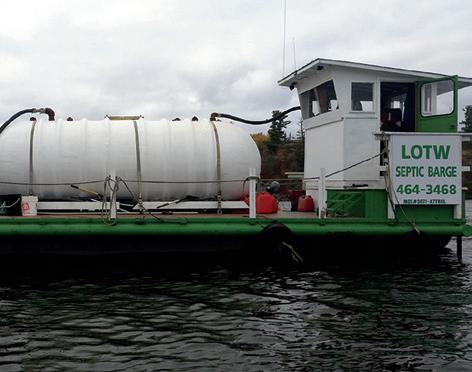








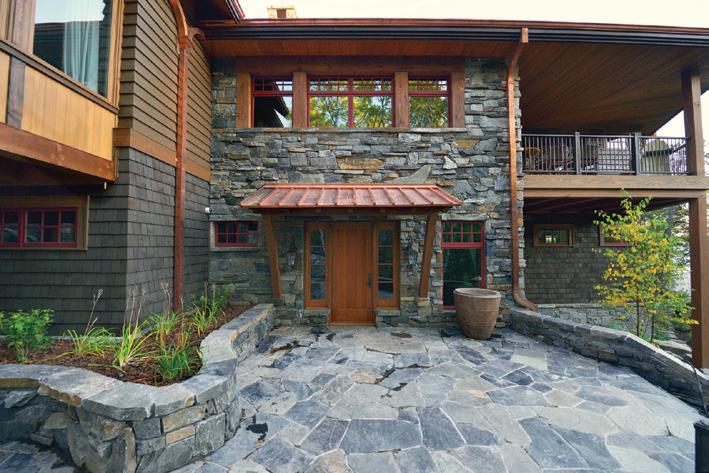
Bruno was not a magnificent specimen. He was no more than a couple hundred pounds, probably just reaching his second birthday. He was a marauder in his adolescence, typical for his age and inexperience. But there was nothing wrong with his style or his nose. He was a black bear, common to the Lake of the Woods area.
During our tenure on our five-acre island, we had numerous encounters with black bear as they swam from island to island foraging for food. As a result of inadequate budgets, and a user pay policy, the Ministry of Natural Resources and Forestry had to suspend their response to complaints of bear break-ins. My husband willingly took up the challenge of relocating bears in our neighbourhood. The Ministry provided a culvert style cage on wheels. Once trapped, the intruder had to be taken a minimum of seventy kilometers to prevent them from returning.
It was during this adventure that we met Bruno. The first time was when Bruno broke into a neighbour’s cabin on a much larger island. We imagine that he simply used his weight against the light wooden door with glass insert, and it unhinged falling inwards.
From there, he left a terrible mess for us to clean up. The cupboards were full of tantalizing smells. With no one yet arriving to open their cabin in early spring, Bruno had the luxury of dining as long as he wanted. He sat in the small kitchen rifling through each cabinet. It was apparent that he had sweetness in mind. There was an assortment of baking items—some not worthy of attention such as cake mixes and biscuits. Many more were irresistible. The floor was stamped with chocolate syrup, butterscotch and chocolate chips. He left claw marks on the pine flooring in his attempt to clean up each morsel. Bruno was hungry from his winter hibernation.
The clean-up was completed, and the door secured. Our neighbours arrived and were on the lookout should Bruno return. As needed, most spring arrivals have shopping to do, a day trip to Kenora. It was enough time. Bruno took advantage.
I have imagined it like this. He sat at the picnic table, his black rump overhanging the seat. His black leathery nose and elongated brown snout found something appealing. It was easy for him to pull the lid off the large metal tin. Easy for him to spill the contents onto the table. It was a mix of spiced cereal, pretzels and M&M’s. He apparently preferred the M&M’s, which his padded paws with extended claws could expertly separate them the pretzels and cereal. These same claws were also perfect for stripping blueberries from low bushes.
Down on all fours, he shuffled over to the large plastic container. He batted at the lid a few times and the hinges held on the cooler. He rose on his hind legs and came down repeatedly with his front

legs onto the top, like a cat pouncing on a mouse. The cooler was still intact. Frustrated, with a fierce swipe he rolled the container across the floor where it landed against the wall, lid open, spilling the contents of canned pop. There was a particularly sweet smell that drew his attention to the can with red and white label. His razor claws and incisors easily punctured holes. He lapped up the sugary syrup. Another can, and another, and another.
Bruno left the island that day. Perhaps unhappy with the arrival of other cottagers and their dogs. My husband’s culvert trap with bread and syrup stayed empty. A bear can smell food two to three kilometres away; definitely through cabin doors and windows; definitely barbecues, garbage, bird feeders and outdoor freezers. They are driven by food, and we offer a smorgasbord right in their neighbourhood.
Bears are a beautiful mammal. They are often hunted not for the meat, but for their thick black coat. A female’s range averages between 10 to 40 sq km, while males are often more than 100 sq km. They can run 30 to 35 kilometres per hour for short distances and standing upright are between five to seven feet tall. Large boars that have trouble foraging because of rotted teeth, or females with young cubs are particularly dangerous. They are otherwise not aggressive, but easy food is—just that, easy.
We have had many sightings of black bear from our island as they made their way to the shoreline for a drink. Others move about, including a mother who swims across the bay with her cubs on her back. The smell of our Alaskan Malamute was enough to deter them from our island over the years.
Bruno may have appeared again that summer. Not far away, another cabin got broken into. The spoils were removed. It may have been Bruno. It may have been his sibling. There was something oddly familiar about what was taken. an
LEAF, but not the kind that grow on trees—this is Learning at the ELA About Freshwater.
Picture this: one day each month, instead of going to class, you go to the Experimental Lakes Area. Instead of being in a classroom, you are on a lake. In place of your usual teacher, you are learning from scientists and staff at the International Institute for Sustainable Development – Experimental Lakes Area (IISD-ELA). You study freshwater science, whole ecosystem research, and other ecological topics. Throughout the school year you get to experience environmental field work, such as collecting water samples. You'll work from a boat in the fall and on top of a frozen lake in the winter.
If the idea of being immersed in a broad array of hands-on environmental science has you thinking “Where do I sign up?” and you are a student in northwestern Ontario that will be in grade 11 or 12 in the 2024-2025 school year… you are in luck.
IISD Experimental Lakes Area (ELA) is the world’s freshwater laboratory. A series of 58 lakes and their watersheds in northwestern Ontario, IISD-ELA is the only place in the world where scientists can research on and conduct experiments with real lakes to build a more accurate and complete picture of what human activity is doing to freshwater lakes.

The findings from over 50 years of ground-breaking research have rewritten environmental policy globally—from mitigating algal blooms to reducing how much mercury gets into our waterways—and aim to keep fresh water clean around the world for generations to come.
LEAF is a high school level course based out of Kenora and the ELA field station. It engages students in meaningful learning about the environment through diverse lab and field science, exposure to Indigenous perspectives and knowledge, and the opportunity to pursue their curiosities alongside experts. Students are guided in exploring their passions as they conduct their own project, analyze and interpret results, then create and present their final work to local community members, IISD-ELA scientists, and educators.





• Meaningful hands-on field and lab experience
• Ability to apply knowledge into practice
• Practice in public speaking and presentation skills
• Different perspectives related to science work and knowledge
• New skills and an expanded range of science-related knowledge
• Information about university and potential careers in the environment and science sectors
• Opportunities to work collaboratively and individually
• New friends, memories, and mentors

This year, among many other activities, the students:
• Processed and collected data on fish captured with minnow traps set under the ice
• Measured snow depth, ice thickness, and various snow parameters
• Performed various water sample analyses in the chemistry lab
• Collected data on stream flow.
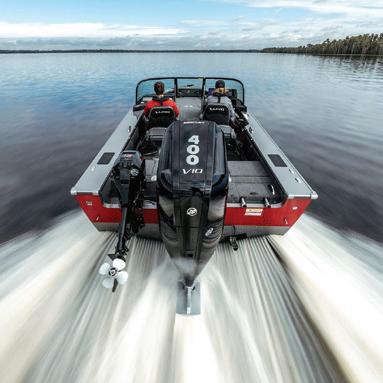
 Students measured snow depth, ice thickness, and various snow parameters.
Students measured snow depth, ice thickness, and various snow parameters.
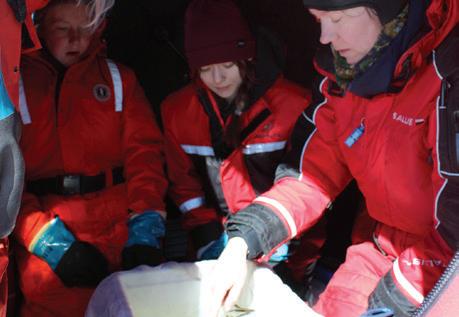
IISD-ELA has a vision of healthy freshwater systems for people and the planet. The unique nature of the IISD-ELA facility and our whole-ecosystem approach to freshwater science and policy impact provides the perfect opportunity to get students participating in real-world applications of the learning that they may have found a little dry in the classroom. The theory they learned in chemistry seems a lot more exciting when an ELA chemist is sharing how it allows us to learn about the lakes they sampled. The privilege to do this important work on entire lakes comes with a responsibility to educate and inspire the next generation of freshwater enthusiasts. Who better to connect with than youth in this region when we are practically located in their backyard?
This year’s students, when asked what they would say to others considering applying, said:
“I’d tell them to do LEAF!”
“The hands-on experience you get in the field, that you might
www.blackrocksec.com
Contact Ray Summers rdsummers@blackrocksec.com (204) 295-6787
 LEAF program students processed and collected data on fish captured with minnow traps set under the ice.
LEAF program students processed and collected data on fish captured with minnow traps set under the ice.

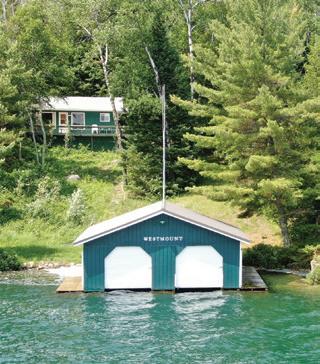
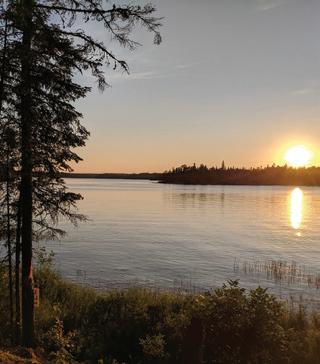
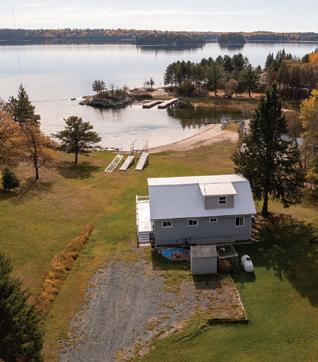



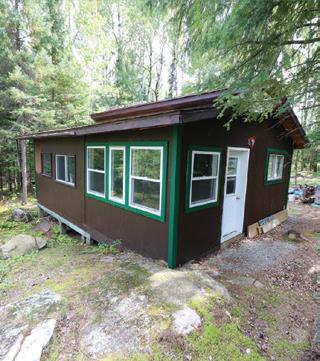


It’s always sad to lose a loved one. Trees included. The good news is that when our dearly beloved trees die in our yards we don’t have to have them buried or cremated. We may be able to just leave them standing right where they passed away so that, even in death, we can continue to find joy in their company.
Just for the sake of silliness, we might consider a proper celebration of life when our beloved live tree graduates to snaghood. The celebration could be complete with a eulogy with lines like this: Elmo, or perhaps Elma, has stood tall among us for many years and will do so for many more but will never leave again. She was a shady character but her bark was worse than her blight. She slipped away quietly after a long and courageous battle against insect infestation and fungi.
Leaving dead trees on your property, where practical, is a rewarding and ecologically sound concession to nature. Standing dead trees are called snags in forestry jargon but are often dubbed wildlife trees for good reason.
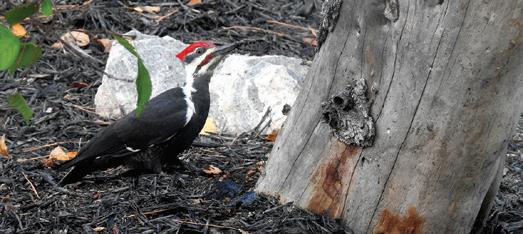
A single snag is a magnet for wildlife. In death, trees become food for many life forms: fungi, insects, amphibians, reptiles, small mammals and many bird species. Snags also serve as hunting perches for insectivorous birds, kingfishers and raptors. Woodpeckers use them to create nesting cavities which may, in turn, serve as homes for many other species from wood ducks to chickadees. Birds, insects, and small mammals often use dead trees for nesting, roosting, and foraging. By leaving dead trees in your yard, you can support biodiversity and create a more ecologically diverse and more interesting environment.
About 85 species of birds, 50 mammal species, and a dozen reptile and amphibian species rely on snags in North America for shelter, food, mating, resting, nesting and other critical activities.
Millipedes, beetles, spiders, worms, and ants inhabit snags. These smaller species attract many of the higher creatures. Drawn by the easy pickings at snags, hungry predators help control insect pests in the forest.
Nutrients are released back into the soil as trees decay. This improves soil fertility and benefits other plants in your yard. Leaving snags is a natural way to recycle nutrients and enhance the health of your garden or landscape. Dead trees can help prevent soil erosion by stabilizing the ground with their roots. This can be particularly important if your yard is on a slope or near a body of water. Wildlife trees can add a unique and rustic aesthetic appeal to your yard. They are visually interesting and create a natural, forested feel in your landscape. Many people appreciate the character and beauty that dead trees bring to their outdoor spaces.
Title photo: Songbirds of many species, including this Bohemian Waxwing, helped to make the snag a birdwatching paradise.Observing the various forms of wildlife that use the dead tree, watching the decomposition process, and learning about the ecological role of dead trees in the environment are great ways to learn more about our natural environment. Dead trees continue to store carbon, thus helping to mitigate climate change by reducing the amount of carbon dioxide in the atmosphere. Removing dead trees can release stored carbon, contributing to greenhouse gas emissions. Tree removal can be costly, especially if they are large or difficult to access. By leaving snags standing, you can defer and perhaps avoid the expenses or work associated with tree removal.
It's important to consider safety when deciding whether to leave a snag standing in your yard. Dead trees can become unstable and pose a hazard, especially during storms or high winds. If a dead tree is close to your home, other structures, or areas where people gather, it may be necessary to remove it to ensure safety. Dead branches and rotted tree tops are called widow-makers for good reason.
As the tree decays branches and treetops begin to fall. To minimize the risk of getting clobbered by falling debris, it may be possible to trim away the branches and remove the top but leave the main trunk standing. Birch snags are particularly dangerous as their bark traps moisture in the wood causing the tree to rot rapidly and the snag quickly becomes a hazard. Standing dead birch should be removed if they are close to where anybody walks, works or plays.
If the snag has to be cut down, you could consider leaving the resulting log where it falls.
As a log, your dead tree would continue to support the web of forest life in much the same way as snags.
Another step toward wilding our yards could be a brush pile. Instead of burning or hauling away logs and dead branches, pile them in such a way as to create a shelter for various wildlife species. Made up of woody debris and loose leaf litter stacked together, these piles, also known as habitat piles, can provide valuable habitat for a wide range of wildlife species. They offer shelter, protection, and nesting sites for birds, small mammals, reptiles and insects.
Unfortunately, many species of migratory birds have been so decimated by migration hazards, pesticides and climate change, the historically few that arrive in the spring have more available habitat than they can possibly occupy. However, that does not negate the value of improving habitat for non-migratory species and
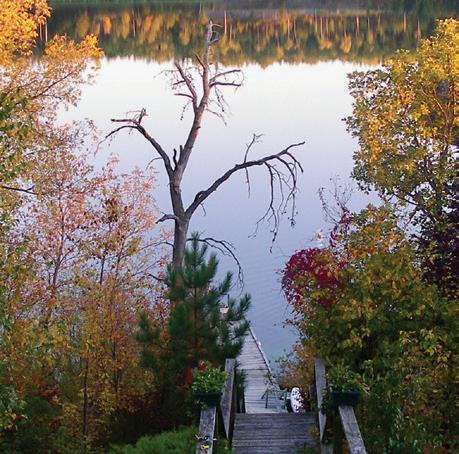
those migratory individuals that choose to take advantage of our concessions to nature.
We can make our properties more hospitable to wildlife. Providing good natural habitat how, when and where we can is the right thing to do for personal enjoyment and the benefits to the natural world. an
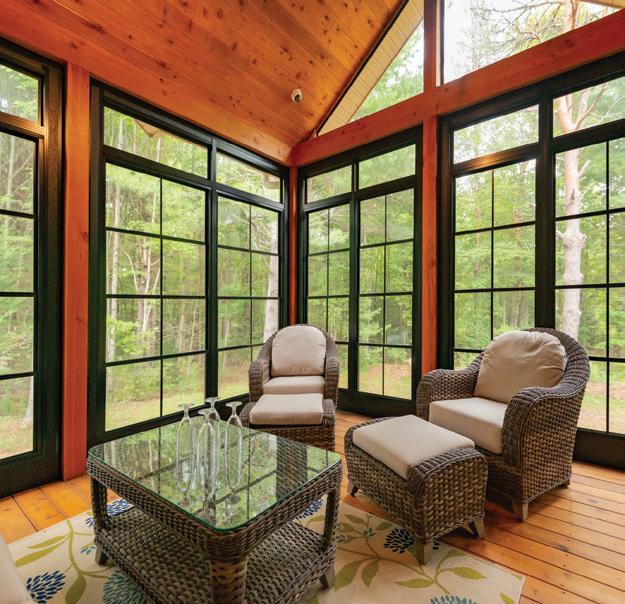

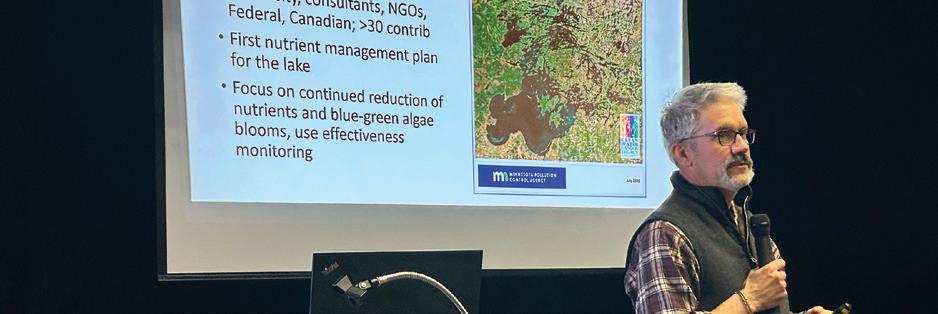
Put a plan in place. Ensure there's enough science and management expertise. Coordinate actions bi-nationally. That’s our mission.
BY TODD SELLERS, EXECUTIVE DIRECTORThe Lake of the Woods Water Sustainability Foundation hosted the 21st annual International Rainy-Lake of the Woods Watershed Forum on March 6-7 in International Falls, Minnesota. Over 140 researchers, resource managers, policy makers and members of the public participated with 27 presentations, and numerous side meetings and workshops.
Fred Desjarlait, spiritual advisor from Miskwaagamiiwi –Zaagaiganing (Red Lake Nation), joined by Métis Senator Karen Cederwall, opened the event, honouring water, land and those who had come together to respect and protect it. Terry Duguid, Parliamentary Secretary to the Prime Minister and Special Advisor on Water, provided a welcome address highlighting the importance of working together to protect our transboundary waters and Canada’s designation of Lake of the Woods as one of eight waters of national significance under the new Canada Water Agency. US Consul Marilyn Gayton delivered greetings from the US Consulate and on behalf of Ambassador Cohen, noting that the Forum as a key opportunity to support a strong US–Canada relationship on our shared waters.
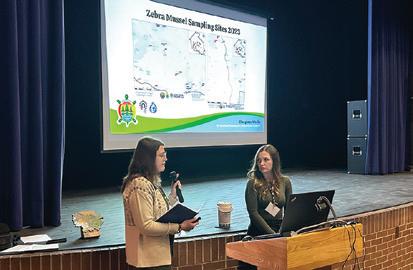
The Forum is an important space for knowledge sharing among scientists, policymakers and community members. We hear about the latest discoveries and theories, and we discuss possible solutions and pathways to action that will improve and sustain the health of our watershed. Importantly, people meet in person to forge friendships and working relationships—the cornerstone of our ability to work collaboratively, across agency and political boundaries, in this complex watershed.
A session on watershed planning and restoration provided a peer learning opportunity between experts from Minnesota and Canada. After a decade of research, Minnesota launched its plan to cut phosphorus pollution to Lake of the Woods and is developing watershed-by-watershed restoration actions to reduce nutrient flows into the lake. In Canada, nutrient and algae science was complete in 2020 and similar nutrient remediation planning is just getting started. The panel at the Forum shared tips for success from Minnesota colleagues, while helping to develop an internationally collaborative strategy to tackle the persistent algae problem in Lake of the Woods.
Dr. Mark Edlund (Science Museum of Minnesota) describes complex interactions between nutrients, lake stratification and emergence of cyanotoxic algal blooms.Other talks focused on the complexity of ecosystem interactions that spur algae to produce toxins, the role of historical and proposed mining on watershed health, encroachment of invasive species like zebra mussels and Phragmites (reed grass), and trials with muskrats to try to control invasive hybrid cattails.
We also heard how studies of river sediments that carry nutrients to the lake will help target remedial actions upstream, and about recommendations to improve water governance through enhanced engagement with Indigenous nations.
The Foundation reception, on the evening of March 6, included two award presentations and a retirement tribute. Paul Anderson received the Gerry Wilson Stewardship Award for his lifetime of environmental advocacy work on behalf of the Rainy Lake Conservancy, Voyageurs National Park and the Community Advisory Group of the IJC watershed board. Dr. Caren Binding was awarded the Larry Kallemeyn Award in recognition of her outstanding scientific contributions to the watershed, including her development of the EOLakeWatch tool that uses satellite imagery to track and measure algae blooms in Lake of the Woods.
Mike Goffin, Regional Director General for Ontario for ECCC, retired at the end of March, having served as the IJC watershed board’s Canadian co-chair since the board’s inception in 2013. Mike has been a crucial ally in helping to bring Canadian research capacity to the lake, as well guiding development of the new Canada Water Agency. After 44 years in the public service, his retirement is well-deserved. an
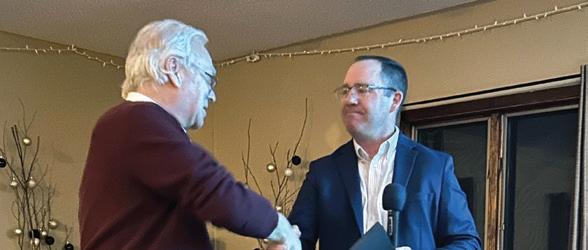
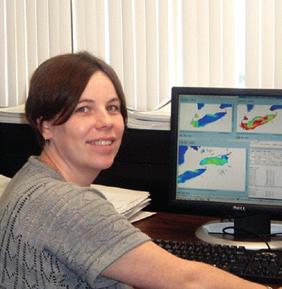

Manitoba’s trees. Don’t move firewood.
Borers are a threat! Invasive species threaten Manitoba’s trees. The emerald ash borer and other insects live in firewood. When firewood is moved between locations, so are the insects.
Dr. Caren Binding, recipient of the 2024 Kallemeyn Award displays her EOLakeWatch tool. Paul Anderson is the recipient of the 2024 Wilson Stewardship Award.As the International Watershed Coordinator, a large part of my work supports projects and activities related to the International Joint Commission’s (IJC) regional watershed board, the International Rainy – Lake of the Woods Watershed Board (IRLWWB). Over the next few months, I am going to share with you the details of several of the major IJC projects underway in our watershed.
Today, I’m focusing on our efforts to improve water levels management in the international waters of Namakan Lake, Rainy Lake and Rainy River, into Lake of the Woods using watershed models and adaptive management techniques.
The IRLWWB’s Water Levels Committee uses rule curves to manage these transboundary waters. A rule curve tells us the optimal water level, bounded by high and low limits, for any given day of the year. These guidelines take into consideration maximizing hydroelectric power generation, optimizing water levels to preserve shorelines and property, ensuring successful fish spawning, protecting wild rice production, and many other social and ecological performance outcomes. In 2000, the rule curves were updated to include more of these ecological and socio-economic factors in the decision making.
Since 2000, the rule curves are reviewed every 15 years. The most recent study concluded in 2018, and recommended establishing a body that, between the 15-year reviews, would be able to monitor rule curve performance with respect to dozens of social and ecological performance outcomes people value. We also know that as our climate is changing, underlying characteristics of the watershed may also change, and we need to be responsive to those impacts, too. Thus the IRLWWB’s Adaptive Management Committee (AMC) was launched in 2020. The AMC is tasked with doing any studies necessary to make sure that the ways the IJC manages water along the transboundary delivers the desired

outcomes, without creating ecological or social harm. While the formal rule curve reviews still happen every 15 years, the AMC is there to recommend any necessary, modest changes to ensure best operating outcomes in the intervening years.
The AMC relies on modelling tools, called Integrated Ecosystem Response Models (IERM), developed in the 2015-2018 rule curve review by a team from Environment and Climate Change Canada (ECCC), headed by Dr. Jean Morin in Quebec City. One IERM was developed for the Namakan – Rainy Lake system, and another for Rainy River. The IERMs take basic watershed physical data (depth, type of substrate, etc.) and overlay that with data about weather, ecology, and infrastructure, and then generate simulated outputs that tell us what impacts we might expect to result from managing water levels in different ways.


In 2023, with International Watersheds Initiative funding through the IJC, the AMC began a new, two-year project with the same modelling team, led by Marianne Bachand, to convert these IERM models into a new, faster, more sophisticated open-sourced system called an ISEE (Integrated Socio-Economic and Environmental) model, and to update the real-world monitoring information

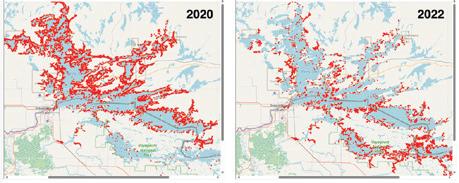
that we feed into the models. While the IERMs are powerful tools, they were a ‘first-generation’ application. It took ECCC developers weeks to run a simulation, and the tools weren’t available for users outside of the government department. ISEE, on the other hand, runs hundreds of times faster and is built using open-sourced computer code that makes the tool accessible to any trained user.
Over the winter, Marianne and her team have been meeting with technical experts, scientists, Indigenous knowledge keepers, and community members who monitor water levels impacts on everything from electricity generation to fish productivity, muskrats’ over-winter survival, abundance of cattail mats and wild rice stands, and much more. The team has now migrated the source code for the model from the original IERM platforms. They have also integrated a handful of socio-economic indicators from other rule curve models, into a single, integrated ISEE platform. Currently, they are adding the new monitoring data to the models.
We are hopeful that at some point this spring, the ISEE system will begin to be operational.
We are very fortunate to have access to this brilliant modelling team who are helping to provide our watershed with one of the most sophisticated water management tools available in North America. The ISEE system will help us to better understand the outcomes of the decisions we make around water levels management, leading to communities that are better prepared
Example of a Rule Curve for Rainy Lake, shared by Megan Garner, Canadian Co-chair, Water Levels Committee, as part of the LOWWSF 2023 Ask an Expert webinar, “Who’s Who in the Watershed?” (May 2023). In this image, the thick black line at the top represents the maximum optimum water level for Rainy Lake on any given day of the year (the horizontal axis) and the thinner black line below it is the corresponding minimum optimal water level. Operators aim to keep water levels somewhere between these two extremes, sometimes targeting levels closer to the upper or lower limits to accommodate anticipated droughts or floods, respectively.
for changing water levels, and hopefully, ecosystems that are more resilient, biodiverse, and thriving under—and not in spite of—our management interventions.
By now, this audience is likely very familiar with the IJC and the IRLWWB, but if you need a refresher, read on.
In 1909, under the Boundary Waters Treaty, Canada and the United States created the International Joint Commission as an agency operating at arm’s length from either government. The IJC was tasked with cooperating to manage internationally shared waters and to protect them for the benefit of today's citizens and future generations.
In our region, a long history of IJC oversight of water governance ultimately led to the establishment of the current IRLWWB in 2012. The IRLWWB combines the former Rainy River Pollution Control Board, which held water quality responsibilities for the shared waters of Rainy River, and the former Rainy Lake Board of Control, which had been responsible for regulating water levels along the international boundary waters by providing guidance to hydroelectric dam operators in Namakan Reservoir and Rainy Lake. The new, amalgamated board combines these water quality and water levels management features under one umbrella, while also expanding the geography under consideration to include the full Rainy – Lake of the Woods watershed—that is, all the waters flowing into the transboundary lakes and rivers, as well as Lake of the Woods. The IRLWWB’s Water Levels Committee retains the responsibilities of the former Rainy Lake Board of Control, while the Aquatic Ecosystem Health Committee covers water quality. an
Teika Newton is the International Watershed Coordinator, working with the International Joint Commission and the Lake of the Woods Water Sustainability Foundation to build relationships and manage collaborative projects throughout the Rainy - Lake of the Woods watershed.
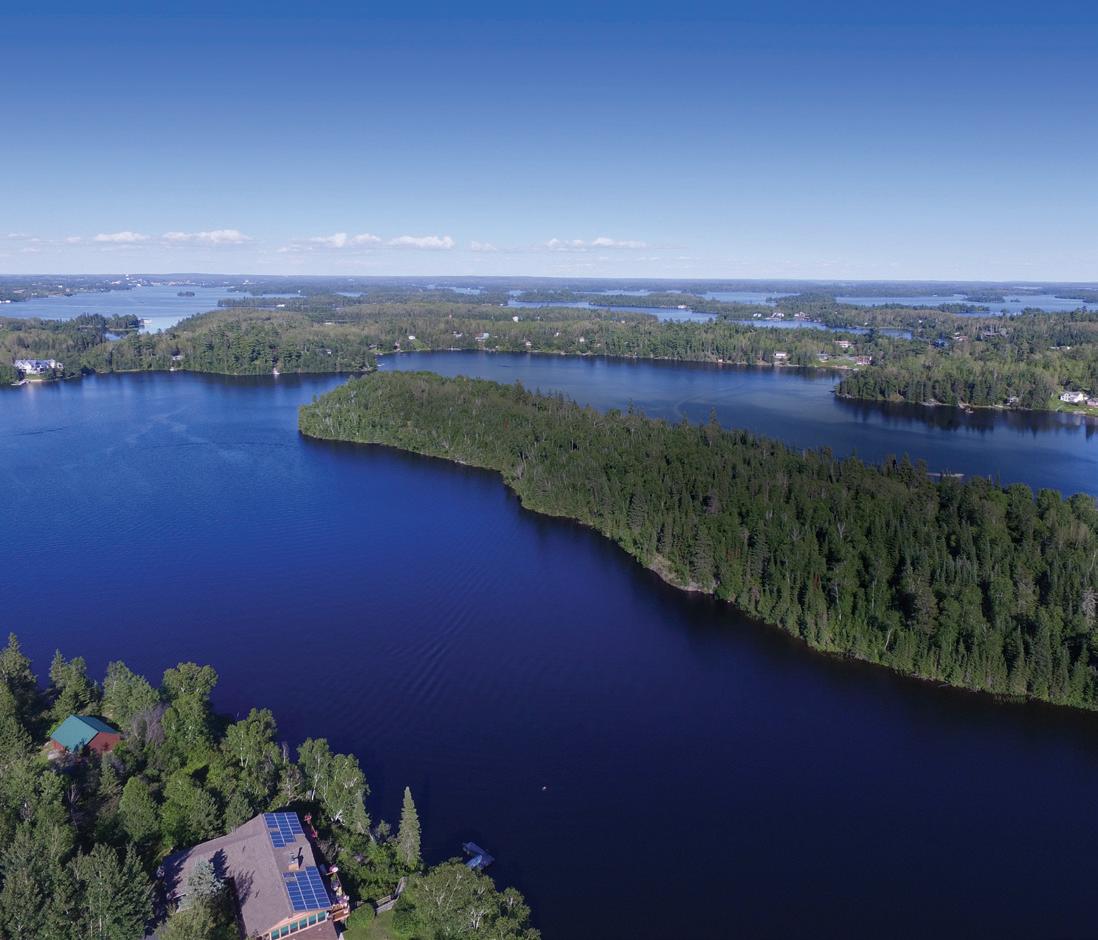







Wildlife custodians see only a small number of the actual cases of injured, orphaned or displaced wildlife from any given area.
In northwestern Ontario, licensed wildlife custodians are few and far between, which means in this area even fewer animals and birds make it to care. This past year, my fosters and I were only able to respond to and action about ten percent of calls received. To the folks I did not or could not respond to, I apologize.
2023 was my 40th year taking in wildlife in need. When I started, what I do now was considered illegal. One could not care for wildlife. But as more and more helpless critters came into my workplace at the Ministry of Natural Resources (MNR), I started to sneak them home. Fortunately, my supervisor at the time had a kind heart and she ignored the scratching, peeping and snuffling in the boxes beside my desk. There were not the sources of information available then like the Internet provides now. My main source of information was a wonderful lady, the late Kaye McKeever from the Owl Foundation. Via telephone and snail mail, she helped me help so many and taught me so much. Forty years later, I still reference her methods and manuals. Today,
the Wildlife Custodian Checklists (see ontariowildliferescue.ca/ downloads/Checklist), costs, inaccessible veterinary care, lack of volunteers and of course, burnout.
The fact we receive so many calls proves that many people really care what happens to the ones we share space with.
The most common reasons for intake: vehicle, utility line, window and building collisions, accidental and deliberate orphaning, pet attacks, entanglement/entrapment, ingestion of foreign materials, toxins/lead poisoning, electrocution, fighting and parasites. As is obvious, products of the human world are the biggest problem.
We have to do better for our wild neighbours. There are steps every person out there can take to reduce the numbers needing care.
For example, the grouse on the road in the spring will not fly as you approach… she has babies crouched beneath her. Slow down and let her move them. Grouse at any time of year may not fly from an approaching vehicle.
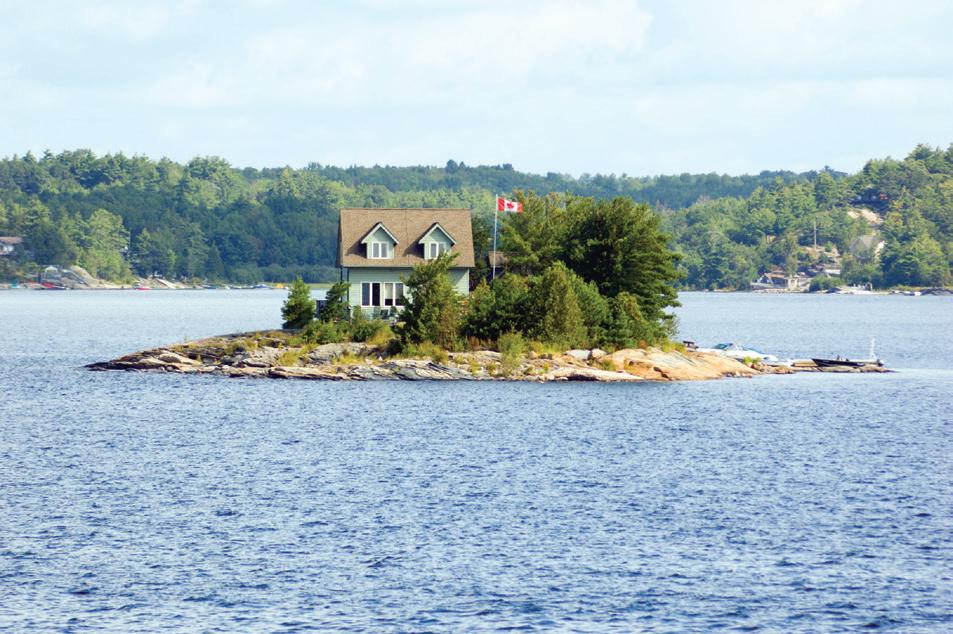



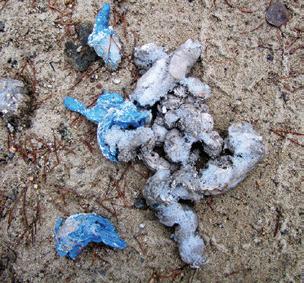
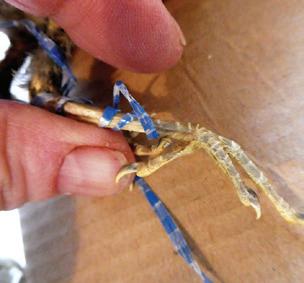
The bird feeders placed near a picture window is entertaining, but window strikes kill and injure many seed-eaters, as do the glass railings that are so popular.
Holiday decorations, fishing line, clotheslines, fencing, hammocks, bird netting and tomato cages are also common entanglements.
Killing or live trapping and relocation of any mammal in the spring and early summer leaves orphans. Ethical pest control agents will not relocate adults during baby season. And deliberate orphans may be refused by a rehabilitator as they would have to be released near where the landowner killed the mother… to likely be killed themselves after much time and expense by the custodian.
Bloodied latex and vinyl gloves left at the site where grouse or other game is cleaned are eaten by scavengers. Lead shot in the entrails is a source of lead poisoning. Non-toxic alternatives are available. Cover the gut piles up with brush or dirt and take the gloves home or burn in the campfire.
Elastic bands, like the ones used on bagged minnows, are swallowed or end up tangled around the tongue of birds and
animals. Make sure they don’t end up in the water. Take them home with you.
This list is only scratching the surface of what I have seen in 40 years.
Having more wildlife custodians, or at least getting back up to past numbers would certainly be beneficial. Until then, we remaining custodians have to do our best to reduce intakes by education and example. I personally have had to limit my workload considerably and can no longer do rescues. I have dreamed of the day I could hang up my talon gloves for over a decade. But to be honest, I doubt I can do that. an
 Domestic animals are often the cause of injured wildlife. This painted turtle was mauled by a dog.
Scavengers feeding on gutpiles left by hunters will also eat the bloody latex gloves they discard. This wolf was lucky and able to pass the gloves...some, particularly avian scavengers often cannot and die.
Domestic animals are often the cause of injured wildlife. This painted turtle was mauled by a dog.
Scavengers feeding on gutpiles left by hunters will also eat the bloody latex gloves they discard. This wolf was lucky and able to pass the gloves...some, particularly avian scavengers often cannot and die.
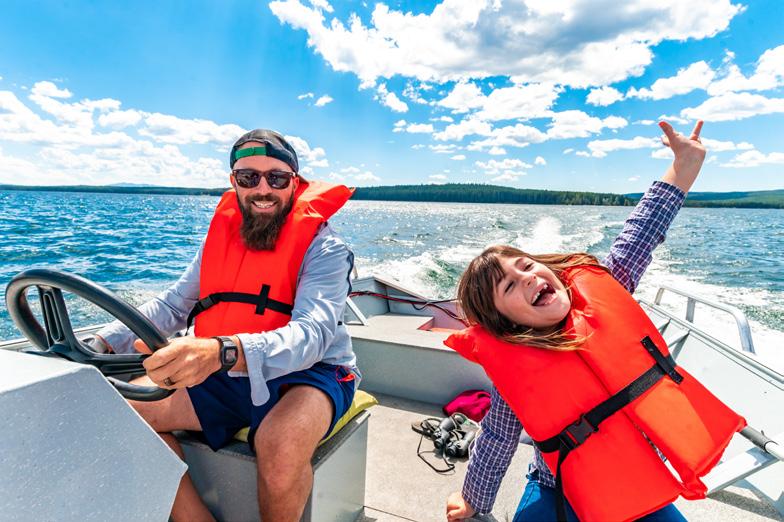

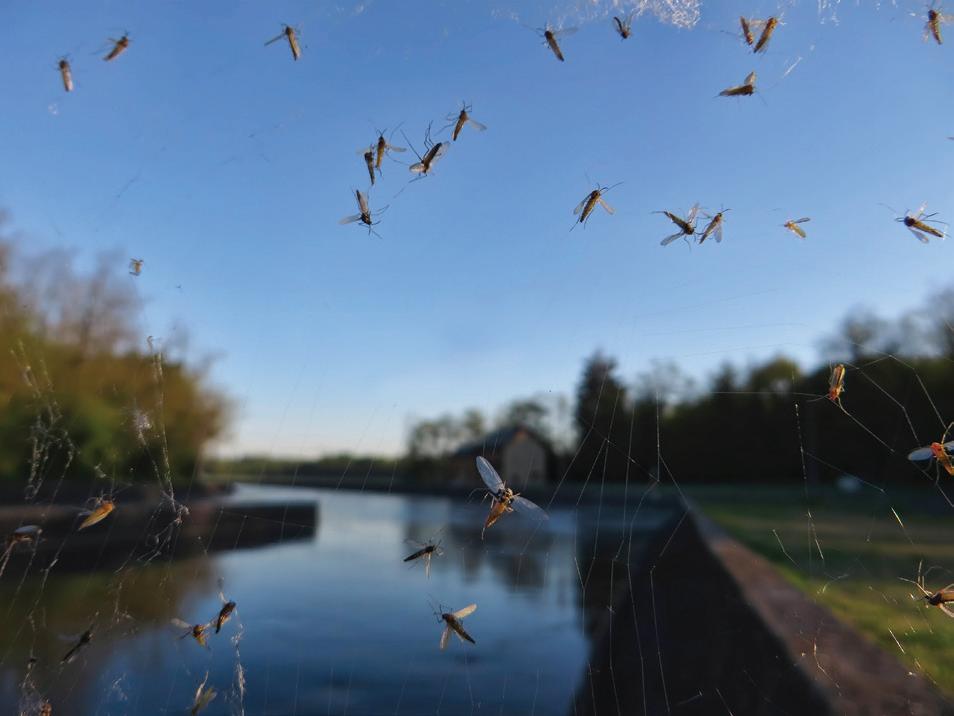



The yard-care market has exploded in recent years with batteryoperated alternatives to traditional gas equipment. For those who want to protect our precious cottage environments, having greener alternative yard care products are truly a great “alternative”.
Before we discuss some of the pros and cons of using green yard care equipment, it is important to recognize that our first choice should always be to keep our cottage properties as natural as possible. Here’s how and why:
• Minimize the areas of lawn. This allows native vegetation to flourish, supporting more biodiversity and better intercepting nutrients in surface water runoff. Consider converting grassed areas to a rain garden to capture nutrientrich runoff water (see the Summer 2023 Area News article on Cottage Rain Gardens)
• Maintain a healthy diversity of native trees and shrubs on your property. This is particularly important between your cottage and the lake to ensure that nutrients from your septic field, greywater fields, or outhouse that are slowly making their way to the lake through the soil will be intercepted by roots and utilized by the trees, rather than by unwanted algae in the lake.
Battery-operated alternatives are now both more reliable and affordable, and you can now find almost any yard care tool in rechargeable or often plug-in electric versions. This includes lawnmowers, snow blowers and shovels, pressure washers, hedge cutters/pole saws, leaf blowers, garden tillers and even chain saws, to name a few. Although corded yard tools are also a good alternative to gas-powered tools, the need to plug in this equipment often poses challenges especially when working on larger lake lots. Let’s look at the pros and cons.
There are both environmental and economic reasons to ditch gaspowered tools and choose battery-operated alternatives:
• Zero emissions: Perhaps the most obvious is the elimination of greenhouse gas emissions of carbon dioxide, nitrogen oxides, and volatile organic compounds.
• Spill elimination: Battery-powered tools do away with the risk of gas and oil spills, which contaminate water and harm aquatic systems, potentially exposing people and wildlife to dangerous hydrocarbons like benzene and toluene. For those of us not driving trucks or pulling trailers, it is nice to

be able to pop your battery-operated equipment in the back of your vehicle to transport, without having to deal with gas fumes. I always carry my battery-operated chainsaw in my SUV, in case I find a downed tree across my road.
• Noise reduction: Battery-operated tools are significantly quieter, and you are sure to keep your neighbours happier if you tend to get your yard work done early in the morning.
• Less maintenance and cost savings: One of the biggest advantages is lower operation and maintenance needs. Gas equipment requires replacing spark plugs, oil and air filters. Remember that these savings will increase every year, making an electric model more economical. You can reduce your purchase costs by ensuring the batteries are interchangeable. The batteries are a significant cost of the overall purchase price, so if you stick to the same brand and voltage/battery size, you can interchange batteries between equipment. In my case, my lawnmower, snow blower and hedge trimmer all share the same battery type, so there was no need to buy batteries for my more recent purchases.
There are a few cons to consider when switching to batteryoperated alternatives:
• The run-time of battery-operated alternatives may be shorter than the job requires, resulting in the need to take more “beverage” breaks during the day while the battery is recharging. If you purchase a second battery, this will mostly eliminate this so-called “break” problem.
• At some point, you may need to purchase new batteries, which can be costly. Be sure to follow the manufacturer’s instructions to ensure you maintain your batteries for longevity. Many factors can reduce the lifespan of your batteries including extreme hot and cold temperatures, overcharging the battery, and letting the battery get wet and dirty.
We can all tread a little more wisely by choosing battery-operated yard equipment. The benefits to you, your neighbours and good old Mother Nature are worth digging into. an

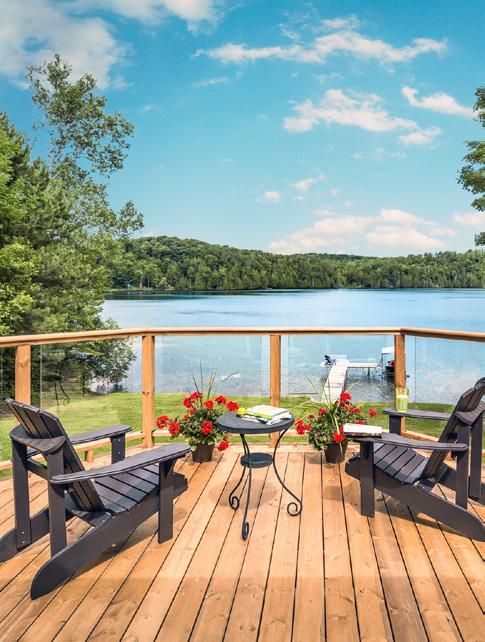

In my article on page 23, I talk about living in a sustainable story. Part of my story is eating fresh, quality food that is in season and grown or raised nearby. Swiss chard is an easy and abundant plant to grow, and you can’t get much closer than

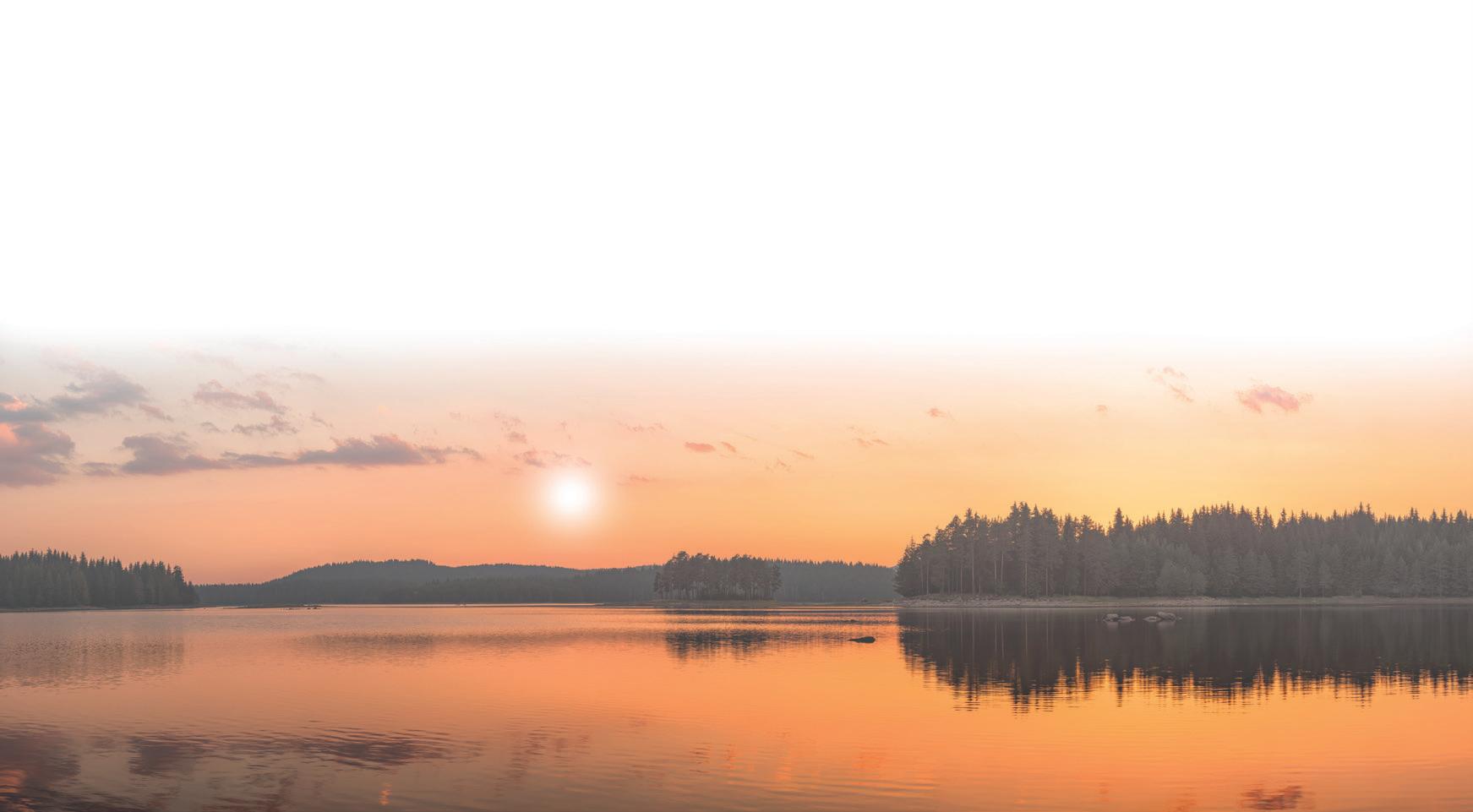


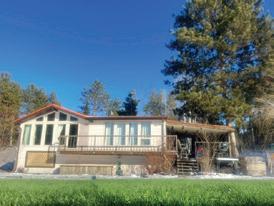
The change of season is always apparent if you take the time to look and listen: the sun is higher in the sky, daylight is with us until early evening and bird song has returned. There is an explosive growth of buds, flowers, shoots and leaves. A surge of life is all around us.
Spring is also a great time for you and your kids to see and hear our local frogs in action. And kids love frogs. So, when the weather warms, head down to your local wetland in the evening, just as the sun is setting. Cup your hands behind your ears and push forward. Soon you’ll be greeted with the delightful spring symphony of frog song—from the high peeps of spring peepers to the trill like bursts of toad song; from the gulping of green frogs to later on in spring, the deep sonorous “garomph” of bull frogs. To find out more about what Ontario Frogs sound like, go to musicofnature.com/calls-of-frogs-and-toads-of-the-northeast.
Here are a few activities to help you and your family enjoy spring.
Here is a dramatic game that helps kids learn how bullfrogs hunt. You’ll need an open field, and some hula hoops (or some circles of rope about the size of a hula hoop). This game can be played in groups of three or more.
How bullfrogs hunt:
They may look like they are slow and bumbling, but bullfrogs are incredible hunters. They’ve been known to catch birds, spiders, mice, bats, dragonflies and even their own kind. A bullfrog is a still hunter, which means it waits for prey to show up. When it detects prey moving near its territory, it rotates its body so that its mouth is oriented towards the prey. If necessary, it may make a few approach leaps. A bullfrog’s back legs are very powerful, like tightly wound springs. Once the frog is close enough, it extends its back legs and launches itself into the air, eyes closed and mouth wide open. Timing is everything. If the aim is true, a bullfrog will unfurl its massive mucus-covered tongue and fling it outward—often covering up its prey like a blanket.
It then retracts its tongue as its jaws clamp down. If the prey is large enough, the bullfrog uses its forearms to stuff any remaining bits into its massive mouth.
How to play the game:
Half of the group will be bullfrogs and the other half dragonflies. Have the bullfrogs set up their territory using hula hoops (or looped ropes). These represent a hunting platform (a lily pad, a clump of cattails or a marshy shore). Make sure frogs are at least three big steps away from each other. Bullfrogs crouch in their hula hoops, back legs folded and bent, front legs in between back legs. Here they wait patiently for dinner. Dragonflies are busy catching their own prey in and among the bullfrogs. They dart forward; they hover, zigging and zagging—flying backward, zooming forward. The quicker dragonflies are, the less likely they’ll be caught. On a given signal, the dragonflies flit among the frogs, trying to catch insects. Meanwhile bullfrogs try their best to catch a dragonfly. It is all about timing the leap. Can they tag a dragonfly with one of their hands extended, representing the unfurled tongue of a bullfrog? It is more challenging than you might think. Try it!

Skating on ice is one thing, but skating on water? How cool would that be? Well, there is an insect that can glide over the surface of ponds, rivers and lakes during the warm spring and summer months. It is called a water strider (not a spider, for it only has six legs—not eight). Water striders take advantage of surface tension to “row” across the water, using their paired legs. They also have small hairs that can both repel water and absorb air. Water striders are predators. When they feel the surface of the water being disturbed, they immediately scoot over to investigate—hoping to find an insect in distress to make a tasty meal.
You can attract a water strider by placing two thin twigs in the water. Hold the first halfway under the surface of the water—don’t move this twig. Place the other twig beside the first, but don’t let them touch. Move this twig up and down like a sewing needle. Your movements will create ripples that simulate a struggling insect. Don’t be surprised if a water strider or two glides over and grabs your twig!
Do you want incredible views of the underwater world without the sun glinting off the surface of pond or lake? It is easy to make your own pond viewer. For a simple viewer, use a large coffee can. Remove both ends and stretch clear plastic wrap over one. Secure with several elastic bands or duct tape. For a more solid and longer lasting viewer, use a section of 4-in. (10-cm) or greater PVC pipe. Glue a piece of Plexiglas to one end with GOOP or similar adhesive. Then place the plastic wrap or Plexiglas end under the surface of the water and look through the other end. Move quietly along. You’ll be amazed at how clear the underwater world becomes with your homemade pond viewer. Try taking pictures or even video. an

Whitefish Bay, Lake of the Woods
2.03 acres vacant building lot, medium profile with 705 feet rugged rock shoreline on Hilowjack Island. Water access.
$159,900
Greg Kirby, Re/Max First Choice Realty Ltd 807-466-8266 / gregkirby.ca
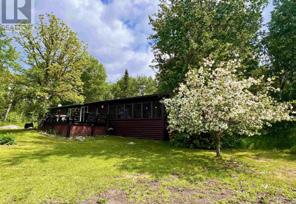
Lot 342 Minaki
Own a slice of paradise. 45-minute drive north of Kenora, in Minaki, by the Winnipeg River. 1.52acre property, 140 ft shoreline, SW views. 1461 sq/ ft cottage with 3 bdrms, 2 baths, open concept, sunroom. 2 docks, sunset views, near marinas.
$399,900
RE/MAX NorthWest Realty Brokerage
807-468-4573 / remaxnorthwestrealty.com
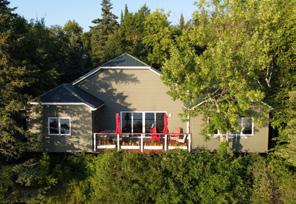
Gun Club Island, LOTW
This 1700 sq ft modern and cozy cottage is only 2-3 km from mainland south of Coney Island. It has approx. 145 ft of sunset facing shoreline; low profile; well treed providing good privacy; guest cottage.
$650,000
Carmichael Real Estate Inc.
807-466-2236 / lakeofthewoods.net

Lot 341 Minaki
45-minute drive north of Kenora, in Minaki, by the Winnipeg River. 1.367-acre property, 170 ft shoreline, SW views. Low profile, ample green space, dock, 2 bedrooms, A-frame cottage, 2608 sq/ft storage, near marinas. Live your dreams!
$249,900
RE/MAX NorthWest Realty Brokerage
807-468-4573 / remaxnorthwestrealty.com

202 Main Street North
Great Investment! Classic 3 level - 6 plex situated on a 68 ft. x 136 ft. lot with street & lane access, covered wrap around deck, rear deck, garage/ storage shed, walking distance to downtown Kenora & Lake of the Woods!
$425,000
Shelley Torrie Home & Cottage Realty 807-547-4020 / kenora-realestate.com

Welcome to 25A Peterson Drive!
This custom-built home offers a generous 3,700 sq. ft. layout featuring 3 bedrooms, an oversized kitchen, formal dining room, and a grand living room offering stunning views of Darlington Bay. File 4590.
$995,000
Cabin Country Realty
807-468-3541 / cabincountry.com

Lot 3 Hidden Trail Road
Experience Black Sturgeon's charm with a 550-ft waterfront property, boasting all-day sunshine and a private dock. Includes build plans and a new driveway. Close to Beauty Bay Golf Course.
$240,000
Century 21 Northern Choice Realty Ltd.
Independently Owned & Operated – Brokerage 807-468-3747 / century21kenora.com
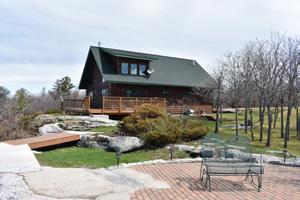
Morson
Year-round home on Lake of the Woods. Google map and virtual tour on our website.
$574,500
Northwoods Realty 807-226-1024 / northwoodsrealtyltd.com

325 Second Street South
New Price! Substantially renovated 2-storey commercial building plus full useable basement with back lane access & parking for 10. 5 residential apartments and 2 commercial spaces on street level in the Heart of Kenora!
$1,495,000
Shelley Torrie Home & Cottage Realty 807-547-4020 / kenora-realestate.com
Email membership@lowdsa.com or mail LOWDSA, Box 1160, Kenora, ON P9N 3X7
Next submission deadline: May 24, 2024
Please try to keep your listing to 35 words or less.
Two Private Cottages on Coney Island. Adjacent cottages connected with large 2-tier deck on private bay. Total of 1400+ sf, 4 BR’s, 2 full baths & 2 full kitchens, new fixed and floating dock w/ 300 ft of sand beach just minutes to Kenora marinas. New doors & windows, lightning fast Starlink WIFI, laundry, BBQ. Prefer seasonal rental, will consider 2-week minimum @ $3500/week. Email CTHaynor@gmail.com.
West end of Coney Island…southern exposure facing Cameron Island. Four bedroom camp. New fixed dock and floating dock for lots of boat parking and great swimming. Brand new Septic system. Bathroom has been upgraded and has an outdoor shower. It is an older style camp built in the 50s and 60s. Has a new roof and a new foundation. Interior is ‘retro rustic’. Front deck very close to the water’s edge. Low profile with only a dozen steps up from the dock. Beautiful back yard, great for volleyball and badminton. There is a wood-burning fireplace and a gas BBQ on a back deck. The CampComm satellite internet system is installed and can be reconnected. Minimum 2 week stay. $2,400 per week. Email inquiries re longer stays and rates to regal2750@gmail.com .
Lakefront Cottage – Clearwater Bay. South exposure, private, road access, (4) bedroom cottage on 6 acres. Steam room / locker room on the lower level and media room. (4) bathrooms, including (2) ensuite for the primary bedrooms, steam shower in primary bedroom. Kitchen, dining and living room that opens onto a (3) season enclosed porch with opening windows. Laundry room. Multiple decks, including a barbecue deck. Boathouse with plenty of dock and swimming space and ample room for docking boat(s). Starlink wi-fi. 2 minutes off Highway 1 and 15 minutes to Kenora. June 28th – July 5th, July 5th – July 12th, July 12th – July 19th, Aug 21st – Sept 2nd and September available dates. $5000 a week, peak season. Contact: jhill@edgemontathletic.ca
Looking for a full season rental on Lake of the Woods? Seasonal rental available for summer of 2024. We are offering a 2 bedroom 1.5 bathroom water access cottage in the Welcome Channel area. Fully furnished and equipped. Starlink internet and Shaw satellite TV. Protected bay and boathouse. Plenty of docking. 10 minutes from Kenora. Available May long weekend through to Sept 15th. Contact for more information, pics or in person viewing. Email: quietchannelcabin@gmail.com or Text 807 407 3001 Road Access Clearwater Bay Cottage. Drive up to the door and you're just steps away from the lake. Recently updated 4-bedroom, two-bathroom cottage, including master ensuite. Lakefront cottage with southern exposure. Beautiful three season screened-in/heated veranda, east and west facing docks, with dock slip available. Wifi, full kitchen, woodstove, and BBQ. Minutes from liquor and convenience stores. Available to rent May, June and September $2500 per week. For more information and or photos email burmaroadrental@gmail.com
Quiet Cozy Get Away on Island Property. Cozy 2 bedroom cottage on Shragges Island, Lake of the Woods. This property is lake access only so guests will need their own transportation. Enjoy a private dock with boat parking for two boats and sauna, lots of trees for privacy, a big deck looking out on protected Quiet Bay. Bedroom 1 has a
double/single bunkbed. Bedroom two is a loft with a Queen Bed. There is a screen room for eating outdoors bug free, an outdoor BBQ, indoor kitchen and bathroom. We rent Friday to Friday in the summer for $1750 a week. This rental is suitable for 2 couples or a family of 5 people maximum. We ask for no parties or pets. Please contact Karla at 8074644088 or email karlajoytreadway@gmail.com to secure your week this summer.Please contact Karla at 8074644088 to secure your week this summer.
Island rental near Kenora. A modern two-bedroom with a sunroom that could be a third bedroom also has a pull-out sofa in the living room. It also comes with a oneroom guest cottage. Comes with satellite TV, good cell service also BBQ on a large deck. It also includes 2 kayaks and a canoe. must have own boat or boat rental, and also comes with a parking spot in Kenora. Available for one week during the first three weeks of July or the last 3 weeks of August. Composting toilet knowledge would be helpful. $1350/ wk. Ph. 204 888-4839
Lakefront - Clearwater Bay. South exposure; road access; spacious docks for swimming, fishing & boating. Large great room, kitchen & dining areas with spectacular lake view. 3 bedrooms; master with ensuite. Full second bathroom—shower & bath. Den with fireplace, satellite TV & pullout sofa. Dishwasher, microwave, washer & dryer. Large deck & BBQ. Minutes from the liquor store, gas & groceries. 1-2 week stays, JuneSept $4000/w. Contact dougpeever1955@ gmail.com for booking details.
LOW Storm Bay Rd 9. Large house with 9 bdrms, hot tub, multi level decks, granite kitchen, boathouse, sauna, WiFi, fireplace, washer & dryer, dishwasher. Kayak & boat are a possibility. $2500-$7000 weekly. Discounts available in the fall. mail@markmcgregor.ch Island rental Storm Bay Rd. near the rollers. 2 log homes, new mattresses, 1 king, 1 king, a double and a single. 2 kayaks & a boat can be included. $200-$375 per night. kaitlyn.mcgregor@gmail.com
Brule Point lakefront 3 bedroom cabin, LOW. Fantastic fishing area, quiet bay, two docking facilities with plug, private beach, fully stocked including freezer, large deck. Cabin sleeps 5, single bathroom/shower. Boat access only. 2024 rate $1390/week. Contact donna@taketwoinc.comdonna@ taketwoinc.com
Exceptional location on Coney Island. Minutes from Kenora / Keewatin with western exposure. Newer, open concept cottage with 4 large bdrms and three bathrooms. Separate master suite with bathroom and private deck. Amenities include a full kitchen with all appliances, dishwasher, microwave, washer/dryer, large island, separate dining area, wood burning fireplace and satellite TV. Screened porch with large wrap around decks overlook the lake, outdoor shower and built-in gas barbecue. Waters edge has a large main dock with two floaters that provide deep water docking and great swimming. Minimum 2 week stay. Email inquiries to bill.ralph@shaw.ca
Lakefront on Trout Lake. 20km north of Kenora. 2 or 3 bdrm cabin available for rent weekends or weekly May-June. Full kitchen & bathrm, TV/DVD, BBQ. Comes with canoe, kayaks & 12 ft. alum. boat. Deck off front of cabin; private deck at water’s edge; your own sand beach. Spring fed lake with crystal clear water. troutlake596@gmail.com
Note that they are posted within a couple days of submission and not subject to magazine deadlines.
Lakefront Cottage on Lake of the Woods. Storm Bay Rd, road access. Includes 3 bedrooms, full kitchen, bath and laundry. 2 acres, private bay, sandy beach, floating dock and good fishing! Available June, July, August. $2,500/week. Text 204-951-5812. Lakefront Cottage, near Welcome Channel. South exposure, water access. 5 miles from Kenora by boat. Private dock, hydro, Starlink internet, TV & DVD player, full kitchen w/ dishwasher & 3 pc. bathroom, additional outdoor shower, washer & dryer, bbq, screened porch, 2 bedrooms. Available Jun – Sep. Monthly, Seasonal rental contact lowcottage@hotmail.com.
Rustic 1000 square foot cabin on Zigzag Island (Clearwater Bay). 5-minute boat ride from Rockeries Marina. A boat rental could be available. Amazing fishing nearby. Satellite TV, great cellular coverage, bbq, kayaks, fire pit, and much more. Prefer a couple or former cottage owners. Knowledge of a composting toilet is essential. 1300$ per week. 204-688-7347.
Lakefront Cottage for Rent - Locke Bay. Road access 15 minutes North West of Kenora. Built in 2017 with 2 bedrooms and 1 bathroom. South exposure with private dock. Fully furnished. Includes Satellite TV, Internet, A/C, BBQ and fire pit. Would prefer a seasonal rental May - September $22,000 or $2000 week (2 week minimum). Please email kenoracottage@hotmail.com for more info.
Rush Bay road access, three bedroom two bath cottage. On one acre, one mile from landing. Bunkhouse, double boathouse with rooftop patio, tool shed, floating docks, front, back decks. Info at rushbay2@gmail.com. Golf Course Bay, Lake of the Woods. For sale by original owner, 3200 sq. ft. 2 story A/C home, 2.5 stall garage with heated workshop, on 2 lots with sand beach, dock, covered boat lift, municipal water & sewer, natural gas heat, paved driveway, many other features. Phone (807) 468-8770.
Part-Time, General Labourer. For help around the cottage and land, possibly 3 days a week. Location: Northern Harbour area at the end of Storm Bay Road. Contact E-mail: peterzaj@mymts.net.
Duo-Therm oil heater. 17"W x 21"D x 34"T. Asking $150. Ted 204-294-4891
8ft of 6" SS chimney. Complete with interior box, roof pieces & hat, asking $550. Ted 204-294-4891
13'8" fiberglass kayak. Very light, no leaks. Comes with paddle & cockpit cover. Asking $550 Ted 204-294-4891
JetSki/SeaDoo Floating Dock. Used floating dock for sale. Available for pick up in the Kenora area (Coney Island). Large size (XL6). It weighs 375 lbs and can handle 2,000 lbs. New ones run, with tax about $4,000+. Includes mounting hardware. Priced at $2,500. Contact dmoll@shaw.ca or call 204-391-4580.
Exquisite high-end antiques for sale. These include a 9-piece walnut dining set, ladies spinet desk, roll top desk and swivel chair, carved curio cabinet with two curved beveled glass doors and matching grandfather clock
from Austria, walnut cabinet with beautiful hand-carved panels in the doors from Belgium, and Dresden candelabras. Excellent condition. Prices negotiable. Must be able to take away. For more information and pictures call or text 807-465-4555.
Water Line and Pump System. Rona Franklin Electric submersible water pump, Well Rite flexcon pressure tank and pressure switch, 280' of 1" water line with electrical cable attached. Perfect for lake front cottage. $700.00. Please text David at 204-479-3146. 10x10 old log shed. 14" overhang. The bottom has some rot but if someone is interested in dismantling and moving it to a new foundation it would be a very cool garden shed or playhouse for kids. We'd just love to see it repurposed as it is pretty cool. Dismantling/PU at Trinity Bay (boat access only) Email mridgen@aptn.ca.
Boat Rail System, Morson area. Approx. 100 ft. long with carriage for 17’ to 20’ boat (more or less) complete with winch system powered by a solar panel with charging system not including battery. Asking $4750. jaslaw1@shaw.ca.
Laser Sailboat or equivalent. Looking for a small sailboat to teach grandchildren how to sail in Deception Bay Area. Contact Tom at tpd@mts.net
Snow Blower or Garden Tractor. Looking to buy a good condition, used, gas powered 30 inch or larger, with Snow-Thrower attachment and or Blade. Contact: peterzaj@mymts.net
Pre-owned boat trailer. For 17 1/2' Lund aluminum boat with 50 hp tiller motor; prefer 13" tires although not mandatory. Bunk or rollers. Contact 204-782-2808 or email jim.coldwell@mymts.net.
16’ Alumacraft runabout. w/25HP Yamaha outboard, Shorelander trailer, Minnkota trolling motor, live well, new LowranceHook 9” fishfinder, new custom cover. Marina stored/maintained. Used max 2 weeks/year. Available 10 July. 13K US$. 209-743-4172.
2019 KingFisher 1825 Falcon. Purchased new in 2020 with 2020 Mercury 90 HP. Excellent condition, only 50 hours. Complete with stand up full cover, stern curtain with window, and full trailer cover. 2 Storage 24” bench seats & 1 Cooler 24” bench seat. Exceptional storage and hauling capacity. $45,000. Call or text 204-797-7300
FIREBALL. An original mahogany fireball sailboat, lovingly restored, comes with one brand new set of sails and one original set plus spinnaker, freshly painted and ready to tear across your lake, trailer included, $1500. Email: mactuck@shaw.ca for google drive link to view photos.
1984 Tiara 31’ Lake Cruiser - Live aboard. Low-time Twin 350 Crusader engines, all new interior refresh with XM and loads of equipment. This ex-Great Lakes boat is ready to go. Contact at 204-292-3970.
LOVE DOGS? It's A Dog's Life needs foster and forever homes for their rescue dogs. Cottagers can help with short or long term fostering or adopting. Website: adogslife.cc or call 807-467-3647.

Siding / Shiplap / Flooring
| T&G
Box 300 Emo Ontario P0W1E0 manitouforest.com info@manitouforest.com






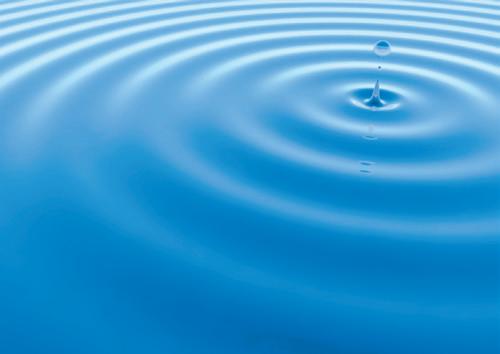






If ever there was a season and setting ripe for entertaining stories, surely it would be in a time of claim staking, risk taking, and fortune making.
Gold mining folklore is salted with tales of derring-do, murders, property disputes, unsavoury characters, and fortunes made and lost. During the Lake of the Woods’ gold mining boom, the stories were somewhat less dramatic, but equally entertaining. Think unlikely prospectors, a golden proposal, and a mysteriously missing cache!
These stories, taken from the pages of The Rat Portage Miner, speak not of assaying, test pits and shaft sinking, but of the colloquial tales of the mining industry.
Consider Mrs. McDonald and Mrs. Hall (no given names provided) who in April 1898 made one of the richest finds in Ontario’s gold fields, right here on Lake of the Woods. Their property, located near the Pine Portage Mine and the Triumph Mine, showed positive surface indications. At a mere four-foot depth, they hit a rich vein. Mrs. McDonald walked to Rat Portage (now Kenora) from the mine toting a ham-sized piece of ore that was almost pure gold. Those who got a look at the ore said they had never seen such a find anywhere.
McDonald of Rat Portage and Mrs. Hall of Winnipeg financed, hired miners, purchased supplies and managed the mine to suit themselves. They indicated that “the mine has not been for sale, and is not now, and that no man can have the property, as they propose to demonstrate to the world that women can be miners as well as men.”
At the time, The Miner stated, “These pioneer lady miners appear to be the only ladies on the American continent who are actively engaged in gold mining.”
In May of 1898, The Midland Free Press published this account which was later reported in The Rat Portage Miner:
“A Midland lady took a trip to Orillia one day last week and on her return witnessed a proposal of marriage in a bus and on the train. In the bus was an attractive young lady and a toil-strong young man.
After an admiring look at the young lady, the man said to her, ‘I am just back from Rat Portage, with over $20,000 in my pocket. Will you marry me?’”
The young lady declined. When she boarded the train, he continued his pursuit and again urged her to marry him, “using his wealth from Rat Portage as a strong inducement.” She again refused, which only spurred on his campaign to win her hand. Her detraining in Waubaushene left him to continue his journey alone.
The Miner bemoaned the fact that the young fellow who had struck it rich chose to seek a wife beyond the borders of Rat Portage, for surely, it postulated, “some of the handsome young ladies of Rat Portage [would] undertake his name and spend his cash. In other words, he should patronize home markets and not go chasing after strange women who do not seem to appreciate the fact that any man who hails from Rat Portage is likely to become one of the great gold mining millionaires of the world.”
If the apocryphal stories of millionaires and ham-sized nuggets were the stuff of local mining legend, so too was the rumour of a buried cache of gold on one of the islands somewhere between Sultana Mine and town.
The story goes that representatives from an English syndicate were at the Ophir Mine (adjoining the Sultana) to examine the site. The bottom of the shaft was apparently “glittering with gold under the miners’ candles” and the gold nuggets were the size of men’s fists. Delighted by the richness of the mine, the syndicate had the gold packed into an ironbound whiskey cask, which was loaded on a steamboat bound for Rat Portage, then to be shipped to London, England.
Guards accompanied the cask to safeguard the treasure but one has to wonder at their effectiveness, for the cask disappeared. Some guards said that it was delivered to Rat Portage, others said that it disappeared enroute. Many believed that it was buried an on island and still is!
The tales of gold abound, much like Lake of the Woods gold at the turn of the last century. an

